DIFFICULT CASES
OB-GYN August A. Bruno specializes in advanced pelvic organ prolapse and pelvic reconstructive surgery: “I handle some of the cases that aren’t handled by other OB/GYNs in the community” P. 4.

RESOLUTIONS
Experts discuss why we make (and break) new year’s resolutions. “You have to set realistic goals,” says a local mental health counselor. P. 9


BFOHEALTH.COM JANUARY 2023 • ISSUE 99 FREE
What makes it so comforting, and why you should go for it. See SmartBites on p. 13 COMFORT FOOD
Tabata Training: Short Workout, Big Results SEE LAST PAGE
Sean Felton professional MMA fighter and trainer at WNY Mixed Martial Arts & Fitness in Buffalo. “I get a much better workout,” he says about Tabata training


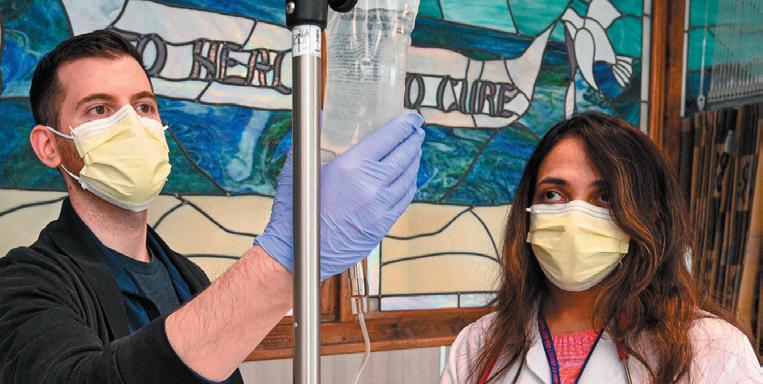




Page 2 • IN GOOD HEALTH – Buffalo & WNY’s Healthcare Newspaper • January 2023 Have you or a loved one been diagnosed with head and neck cancer? The Jonah Center, part of ECMC’s Center for Cancer Care, participates in clinical trials to offer patients advanced therapy options. A Merck-sponsored Clinical Research Trial (KN689) will be conducted to include patients specifically diagnosed with Stage III – IVA resectable locoregionally advanced squamous cell carcinoma of the head and neck. If you or a loved one have been diagnosed with the type of head and neck cancer specified above, you or they may be eligible to participate in this clinical trial at Erie County Medical Center (ECMC). ECMC’s Center for Cancer Care specializes in Head & Neck, Plastic & Reconstructive Surgery, Dental & Medical Oncology, Maxillofacial Prosthetics, and Breast Oncology. The Jonah Center offers medical oncology (including chemotherapy) for a variety of cancers, as well as hematology treatment for cancers and other conditions of the blood.
& Neck Cancer Clinical Trial Participation Opportunity For more information, call the Jonah Center at 716-898-5660 or email DLEON@ECMC.EDU The difference between healthcare and true care™ EC3671 Dental(ClinicalTrial) InGoodHealth 9.75x6.69Ad.indd 1 12/6/22 12:05 PM
Head
“Patients want to make sure that they are getting the best treatment that they can get anywhere. At Roswell Park, we are at the forefront of new cancer therapies. They know, with full confidence, they are getting the best cancer care available.”
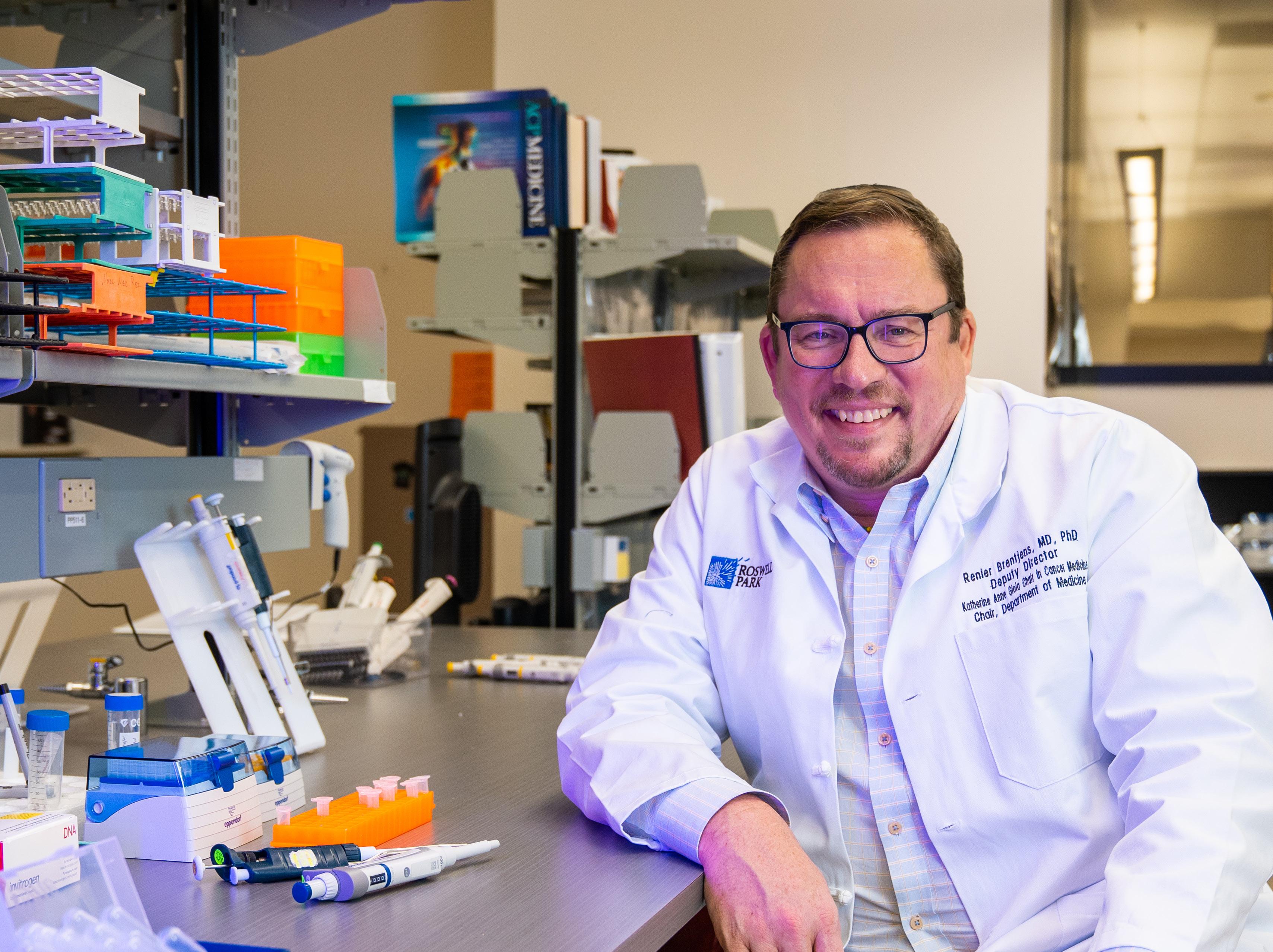 – Renier Brentjens, MD, PhD Deputy Director
– Renier Brentjens, MD, PhD Deputy Director
Please visit JustOneDayWithUs.org or call 1-800-ROSWELL (767-9355) Kim Sweeney and her team are here to assist.
January 2023 • IN GOOD HEALTH – Buffalo & WNY’s Healthcare Newspaper • Page 3
51886 JOD Print Ads Brentjens.indd 1 10/24/22 4:00 PM
Cats Now Have an FDA-Approved Pill to Treat Their Diabetes
Owners whose cats have diabetes now have a new option to care for the condition in their otherwise healthy pets.
The U.S. Food and Drug Administration in December approved the first pill to improve control of diabetes in some cats.
The drug, called Bexacat (bexagliflozin tablets), is not insulin and is not meant for cats who have the type of diabetes that requires treatment with insulin. Rather, it is what is called a sodium-glucose cotransporter 2 (SGLT2) inhibitor.
Bexacat is a once-daily flavored pill given with or without food to cats who weigh at least 6.6 pounds.
The active ingredient in this pill prevents the cat’s kidneys from reabsorbing glucose into the blood. This excess glucose leaves the body through the urine, lowering blood sugar levels.
As part of the approval, the FDA requires that Bexacat labels include a boxed warning about the importance of patient selection. Only certain cats should take the drug, determined through careful screening.
Potential patients must be screened for kidney, liver and pancreatic disease, as well as ketoacidosis, a high level of a type of acids known as ketones in the blood.
Cats who are treated with Bexacat may be at an increased risk of serious adverse reactions, including diabetic ketoacidosis, the FDA said. This can be fatal and should be treated as emergencies.

In a news release about the approval, the FDA explained that like in humans, the cells of a cat’s body need sugar in the form of glucose for energy. Cats with diabetes can’t properly produce or respond to the hormone insulin. Insulin helps cells use glucose for normal function.
The FDA cited two field studies that were six months long and an extended field study in its approval. The studies found the medication was more than 80% effective in improving blood sugar control in cats with diabetes.
Meet Your Doctor
By Chris Motola
August A. Bruno, M.D
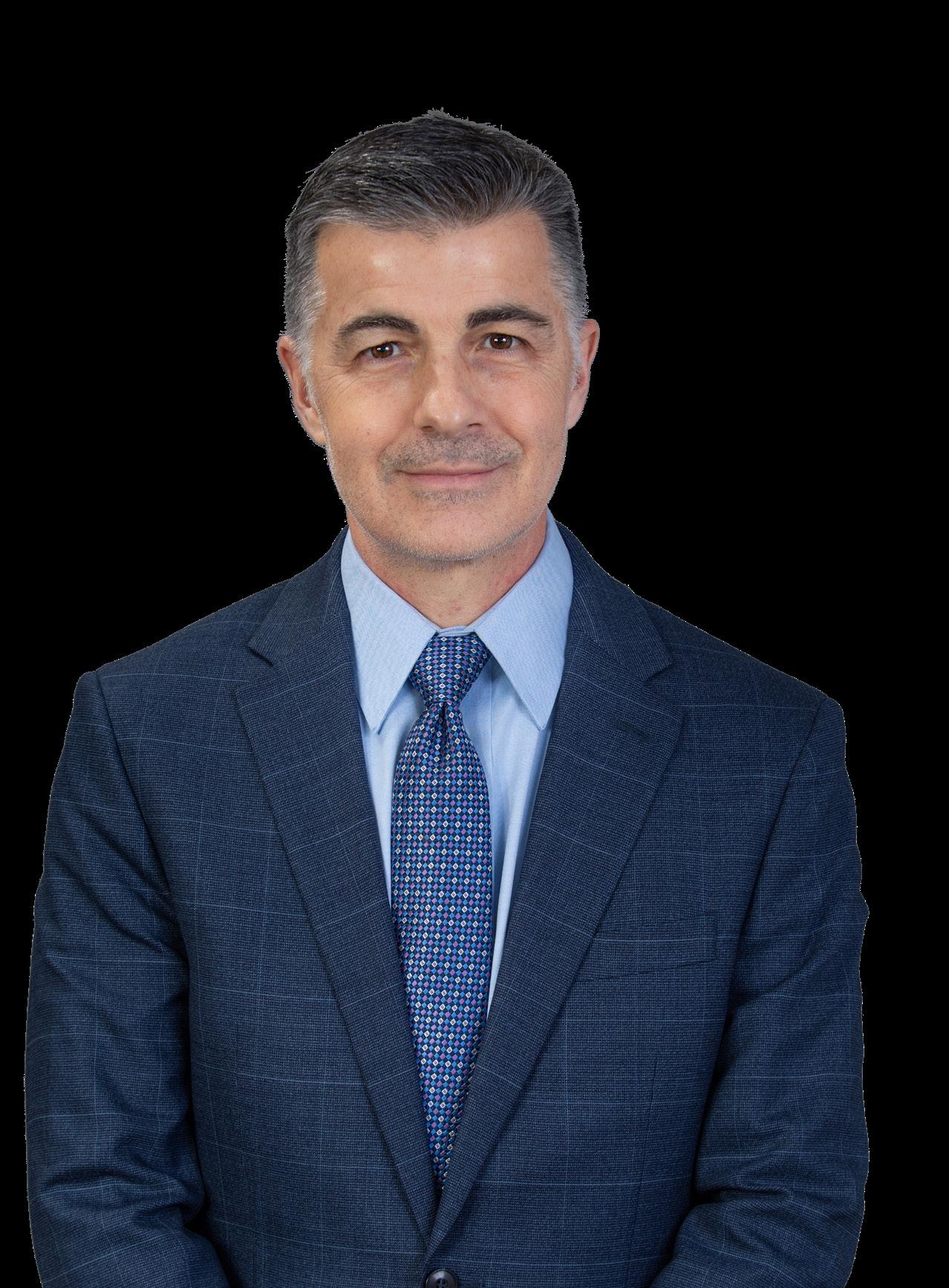
OB-GYN specializes in advanced pelvic organ prolapse and pelvic reconstructive surgery: “I handle some of the cases that aren’t handled by other OB-GYNs in the community”
Q: Tell us a little about your OB/ GYN practice. Are you more of a generalist or do you subspecialize?
A: I am a generalist. I do have a niche, though; I specialize in advanced pelvic organ prolapse and pelvic reconstructive surgery. I do some advanced surgical procedures, including robotics. So there’s a little bit of a tendency for me to be more surgical-related. I handle some of the cases that aren’t handled by other OB-GYNs in the community.
Q: What kinds of conditions require these interventions?
A: For pelvic organ prolapse, uterine prolapse, dropped bladder, dropped uterus, urinary incontinence, things of that nature. For the robotic surgery, it’s more complex GYN surgeries. Large fibroids, bleeding problems, endometriosis. For the prolapses, it’s pelvic reconstructive surgery where you’re pretty much reconstructing the pelvic floor or managing the symptoms of pelvic organ prolapse. But I also do basic obstetrics and office GYN.
Q: How intense are these surgeries? How hard is it to repair a pelvic
or—the rectal and then central area is the uterus and top of the vaginal canal. Most women who have pelvic relaxation have defects of all these parts. So in one case they may need a bladder elevation, repair of the rectal wall, anchoring of the vaginal wall, incorporating a hysterectomy at the same time. So it’s a fairly involved surgery even if it’s not a very lengthy one. Post-op recovery to resume full function without any restrictions is usually six to eight weeks. It’s usually an outpatient surgery, or one overnight stay. It’s typically done vaginally, so you don’t need to deal with a lot of abdominal incisions except in the case of robotic repair, which uses a minimally invasive incision.
Q: What generally causes pelvic floor relaxation?
A: The biggest culprit is pregnancy. Just carrying the weight of the pregnancy stretches the uterus, compromises the integrity of the pelvic floor, the ligaments, the connective tissue, the muscles. With vaginal deliveries, as opposed to C-section, as the baby passes through the birth canal, there can be some damage to the pelvic nerves, which can compromise the integrity of the ligaments. The length of the labor and the size of the baby are also factors. Then there are a whole other host of conditions that affect it. Smoking can affect it. Having a high BMI puts weight on the pelvic floor. Doing activities that are constantly straining the pelvic floor: lifting, pulling. Underlying medical conditions like diabetes, hypertension, connective tissue disorders, autoimmune diseases, they can also predispose you. There is some genetic predisposition as well; you can see it show up more often in some families. Aging is a factor as women enter their later menopause years.
Q: Is there a preventive medicine side of practice for dealing with these issues?
A: To a certain degree. Exercise, working out, keeping your weight down. Kegel exercises done on a regular basis can help prevent development of the problem or help to keep it from progressing. Some women will choose an elective primary cesarean section

during pregnancy; in some countries like Brazil, the rate is more than 80%.
Q: What’s your practice mix between office GYN and surgery?
A: It’s fairly busy on all fronts. I generally do about 150 to 200 deliveries a year. It used to be more than that when I used to be the director at Catholic Health Mercy OB-GYN clinic. I was doing upwards of 300, 350 deliveries a year. So the obstetric deliveries are down. I’m in the office pretty much every day of the week. I see about 50 patients a day. My surgical days are very busy. As a surgeon you get something called block OR time and my block OR time is fairly full. On average I’m doing about 400 surgical cases a year. I’d say obstetrics, surgery, and patient visits each take about a third of my time.
Q: You’ve been recognized fairly recently for both efficiency of treatment and patient satisfaction. How do you square those two factors?
A: I don’t know. I practice alone. I’m solo. I have sort of a unique practice. I get a lot of referrals. I don’t share my patients’ care with other providers, so there might be more of a bond between me and my patients. It’s not that I’m a better physician necessarily, they’re just seeing different providers from visit to visit, there’s a lot more continuity and more of a chance to build trust and understanding. If you’ve been in practice for a while, your work is your best advertisement. Happy patients will refer their friends and family. So I have pockets of patients who are groups of friends are family members that I care for. That in itself can make the experience better. As far as efficiency goes, you try to do good work and you get better at it and sometimes you get recognized for it. I got those awards through Catholic Health System. They survey the patients about their hospital experience. I think a big part of it is that patients didn’t feel like their care was disjointed, for lack of a better term. When you’re in a comprised position, anything that improves comfort level has an impact. With efficiency in my field they look at surgical outcomes, complication rates, length of stay, need for transfusion for parameters and then you get an efficiency index. What I’m doing to get that is kind of a difficult question to answer.
Lifelines
Name: August A. Bruno
Position: OB-GYN with General Physician, PC
Hometown: Buffalo
Education: Medical degree, State University of New York at Buffalo School of Medicine (cum laude), 1991; State University of New York at Buffalo, Obstetrics & Gynecology
Awards: Received Catholic Health System’s Physician Award for Efficiency, June and December 2019 and Physician Award for Patient Experience, December 2019.
Affiliations: Kaleida Health; Catholic Health System
Organizations: American College of OB-GYN, American Board of Obstetrics and Gynecology, Erie County Medical Society; American Medical Association Family: Married, three sons
Hobbies: Restoring furniture, exercising, listening to podcasts, helping with wife’s garden
Page 4 • IN GOOD HEALTH – Buffalo & WNY’s Healthcare Newspaper • January 2023
Lasik Surgery Should Carry Warnings
FDA drafts guidance that warns of potential complications
Lasik eye surgery is a common vision-correcting procedure that many Americans view as safe and effective, but the U.S. Food and Drug Administration has now drafted guidance that warns of potential complications.
Although many patients are happy with the results after surgery, the recommended new guidance says complications can include dry eyes, double vision, difficulty with night driving and, in rare cases, chronic eye pain. Even after surgery, some patients will still need eyeglasses.
The draft also notes that certain types of patients may be at higher risk of problems, including people with chronic conditions such as diabetes and those who take certain medications.
Since the recommendations were first released this summer, more than 600 people and professional organizations have weighed in on the issue.
“All we’re asking for is balance,”said Vance Thompson, incoming vice president of the American Society of Cataract and Refractive Surgery, told the Times. “This document mainly emphasizes the dangers and complications of Lasik, with no mention of the advantages, and the tone is negative enough that it will scare patients.”
Thompson noted that more than 90% of patients in the FDA’s studies were satisfied because they were “achieving good vision without spectacles, which is the goal of most patients.”
Surgeons and device manufacturers have sought to have the draft recommendations withdrawn.
But a professional organization representing optometrists recommended adding even more precautions to the draft, to include pregnant women and those with irregular astigmatism.
Lasik is typically a procedure completed in just 15 minutes per eye, where the surgeon reshapes the cornea with cuts and a laser to correct poor vision. Often the procedure is not covered by insurance and can cost patients thousands of dollars out of pocket.
Still, more than 500,000 adults opt for the surgery each year and many ophthalmologists declare it safe, with complications happening very rarely.
To arrive at the draft recommendations, the FDA both collaborated on and analyzed studies on Lasik outcomes published in the past decade.
One of those studies found that three months after Lasik nearly half of patients who had previously not had visual symptoms did after the procedure. This included seeing halos around lights. About one-third of the patients had dry eyes.

“Patients undergoing Lasik surgery should be adequately counseled about the possibility of developing new visual symptoms after surgery before undergoing this elective procedure,” the study authors wrote.
The FDA has not said when the guidance will be finalized.

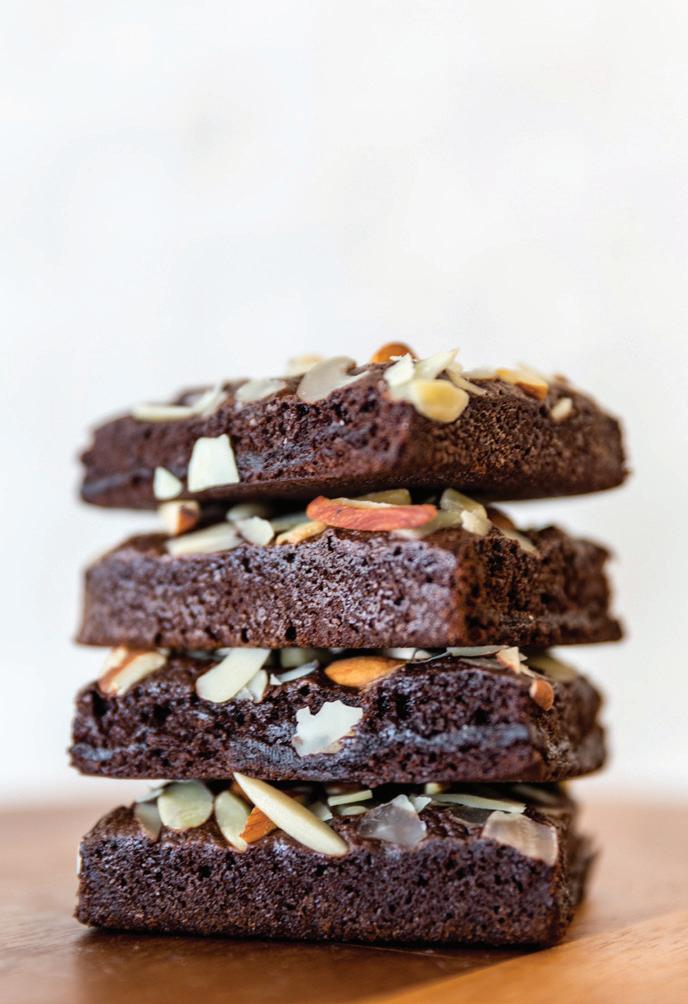
SERVING WESTERN NEW YORK
A monthly newspaper published by Local News, Inc. Distribution: 25,500 copies throughout more than 1,500 high-traffic locations.
In Good Health is published 12 times a year by Local News, Inc. © 2022 by Local News, Inc. All rights reserved. P.O. Box 550, Amherst, NY 14226
Phone: 716-332-0640 • Fax: 716-332-0779 • Email: editor@bfohealth.com
No material may be reproduced in whole or in part from this publication without the express written permission of the publisher. The information in this publication is intended to complement—not to take the place of—the recommendations of your health provider. Consult your physician before making major changes in your lifestyle or health care regimen.
January 2023 • IN GOOD HEALTH – Buffalo & WNY’s Healthcare Newspaper • Page 5
Editor & Publisher: Wagner Dotto
Writers: Deborah J. Sergeant, Jim Miller, Gwenn Voelckers, Anne Palumbo, Brenda Alesii, Amanda Jowsey, Ernst Lamothe Jr., Jane Schmitt • Advertising: Anne Westcott, Amy Gagliano • Layout & Design: Kris Adams • Office Secretary: Ahme Cruz
D E P AUL D E P AUL
U.S. Gun Deaths Reach Highest Level in Decades
More Americans are dying from gun violence, in both homicides and suicides, than they have in decades, a new report shows.
The U.S. gun death rate hit its highest level in nearly 30 years, with the sheer number of people dying from guns reaching 47,000 in 2021, the highest in 40 years, according to the study.

Increases were higher for women than men, and especially for Black women. Among Black women, firearm-related homicides have tripled
since 2010, while suicides have doubled since 2015.
“Women can get lost in the discussion because so many of the fatalities are men,” study co-author, physician Eric Fleegler, an associate professor of pediatrics and emergency medicine at Harvard Medical School in Boston, told the Associated Press.
Researchers found a 71% increase in the number of women killed by guns, from four per 100,000 in 2010 to seven per 100,000 in 2021. Women comprise about 14% of overall gun
deaths.
In Black women, suicides rose from a rate of 1.5 per 100,000 in 2015 to about three per 100,000 in 2021. Homicides in Black women were 18 per 100,000, while they were four per 100,000 in Hispanic women and just two per 100,000 in white women.
More than 1.1 million people were killed by guns during the study’s 32-year timeframe.
Researchers found a steady increase in gun deaths beginning in 2005, and then a sharp jump from 2019 to 2021, when deaths rose 20%.
Fleegler said that asking why gun deaths would rise during the pandemic was “a straightforward question with probably a complicated answer that no one really knows the answer to.”
Experts said it could be a mix of higher gun sales, stress, mental health issues and disruptions at home and work.
Men also saw an increase in gun deaths, and Black men continued to have the highest gun death rates.
The findings were published Nov. 29 in the journal JAMA Network Open.
HealthcareinaMinute
By George W. Chapman
Healthcare Inpatient Bottleneck
Since the outbreak of COVID-19 three years ago, the average length of stay (ALOS) in a hospital has increased 19% according to the American Hospital Association.
It has increased 24% specifically for patients waiting to be transferred to a post-acute facility like a nursing home or psychiatric facility.
The increased ALOS for patients waiting to be transferred is due in large part to staffing shortages at post-acute facilities. These patients have been clinically cleared for discharge. They are literally lingering in hospital beds which in turn delays admissions from hospital emergency rooms.
Consequently, patients are being treated in ER hallways due to lack of available beds.
Hospitals are asking Medicare and commercial insurers for relief. Hospitals are not paid by the day or per diem. They are paid by DRGs (diagnostic related groups). Each DRG payment is based on acuity and procedure and an ALOS. The DRGs were established well before the pandemic. The AHA is suggesting a temporary resurrection of per diem payments, especially for those patients cleared for discharge but are waiting to be transferred to another facility.
While most nonprofit hospitals ran an operating deficit every month through October in 2022, the nation’s three largest for-profit systems reported healthy operating profits through the same period. HCA Healthcare was 11%; Tenet was 8%; and Community Health Systems was 1%.
Impact of the Pandemic
The United Health Foundation, affiliate of health insurance giant United Healthcare, just issued its annual report on the changes in our overall health from 2020 to 2021. There is very little good news. There was an 11% increase in people describing their mental health as “poor” and a 15% increase in people reporting they were in “frequent mental distress.” There was a 20% increase in drug-related deaths (28/100,000). There was an 18% increase in premature deaths (before age 75). There was a 13% increase in gun related deaths. The number of people with multiple chronic conditions increased 5%. While there was a 7% decrease in the uninsured, part of this gain may be lost if pandemic related insurance flexibilities and incentives expire in 2023. The “good news”? United’s profit was $17.3 billion in 2021.
CMS Demands Faster Authorizations

Nothing is more aggravating and
frustrating to physicians and their patients alike than having to wait for an insurance company to approve what the physician has ordered to care for their patients. Prior authorization for designated procedures and drug referrals is required by insurers. Purportedly, It is a cost containment tool to deny ineffective or unnecessary drugs and procedures. Approval or denial can often take weeks, which delays care. Typically, 95% are approved anyway, so prior authorization is more of a cost delaying tool. Consequently, CMS has jumped in to speed up and improve the process.
By 2026, Medicare Advantage plans, Medicaid Managed Care plans, and Affordable Care Act commercial plans on the insurance exchanges must implement electronic authorization, eliminating the labor- intensive paperwork seemingly designed to slow things up. There will be incentives for providers to implement this as well. The goal is to improve the patient experience, speed up the delivery of care, decrease patient anxiety and get frustrated providers out of the middle. Insurers must give specific reasons why something was
denied within seven days.
Coalition to Improve Care
The Institute for Healthcare Management and the AMA recently announced the creation of the “Rise to Health Coalition.” Along with the American Hospital Association and Race Forward, advocates for reducing racial inequities if healthcare, the coalition will recruit providers, payers and drug manufacturers to share solutions on improving outcomes and expunging racial inequities in healthcare. The group will focus on access, workforce, cost, quality, safety and social determinants of healthcare (income, race, nationality, transportation, housing, unemployment, food insecurity and education). Each organization must also develop measurable reductions in inequities within their organization. The coalition has laudatory goals. It remains to be seen how much cooperation can be engendered between not-for-profit organizations and for-profit businesses.
Senate Exploring Mental Health Bias
The negative impact of the pandemic on our mental health is undisputed. The Senate Finance Committee is in the early stages of examining the inequities in how insurance plans, both governmental and commercial, treat mental health. The committee is concerned about inaccurate and outdated provider directories, (referred to as “ghost networks”), pay rate disparities between medical/surgical versus mental health providers and disparities between patient cost sharing or out of pocket for mental health services versus all other. The committee has asked the General Accounting Office to investigate payment and consumer out of pocket disparities. Consumers that have selected a plan based upon participating mental health providers are often thwarted by wrong or out of date provider contact information and/or providers not accepting new patients. More mental and behavioral health providers would participate in various insurance plans if reimbursement was fair and reasonable. The committee expects to file a report early 2023.
Patient Portal Billing
Hospitals, physicians and ancillary providers have encouraged their patients to set up an account with their patient portal to communicate, bypassing clogged phone lines. The portals are designed for patients to verify, schedule and cancel appointments, update insurance and demographics, seek information about the practice, or what might be required before a visit.
Unfortunately, patients seeking to avoid an office or telehealth visit are abusing the portal by seeking medical advice for free. Consequently, providers like the Cleveland Clinic have begun charging patients for a provider’s time and expertise, usually about $50. Many hospital systems, physician practices and other professionals are contemplating also charging for medical advice sought via their patient portal. I do not know how insurance is viewing this recent phenomenon.
COVID-19 and Pregnancy
The CDC and the AMA are recommending(and imploring) pregnant mothers to get vaccinated. Since the beginning of the pandemic, pregnancy related deaths are up 80%. Unvaccinated pregnant women and their unborn children are at far greater risk for complications, severe illness or even death. Right now, infants younger than 6 months are being hospitalized for COVID-19 at the same rate as seniors older than 65. Unfortunately, only 45% of pregnant women are vaccinated and only 52% of women who are breast feeding.
George W. Chapman is a healthcare business consultant who works exclusively with physicians, hospitals and healthcare organizations. He operates GW Chapman Consulting based in Syracuse. Email him at gwc@gwchapmanconsulting.com.

Page 6 • IN GOOD HEALTH – Buffalo & WNY’s Healthcare Newspaper • January 2023
Q & A
By Brenda Alesii
Two well-known agencies joined forces in mid-November, resulting in a coordinated network of behavioral healthcare service across the region.
This strategic plan linking Horizon Health with Endeavor Health Services will provide a comprehensive spectrum of quality coordinated care for patients and their families.
Known as the Horizon Health Alliance, the affiliates will employ more than a thousand people and serve in excess of 20,000 patients.
While Endeavor Health Services, the inaugural affiliate, will continue to operate independently, the new partnership will collaborate in four key areas: data analytics, training, marketing, and DEIB (diversity, equity, inclusion, belonging).
Amherst resident and UB alumnus Anne D. Constantino has been at the helm of the Horizons Corporations since 1994. In Good Health spoke to Constantino about this new corporate affiliation.
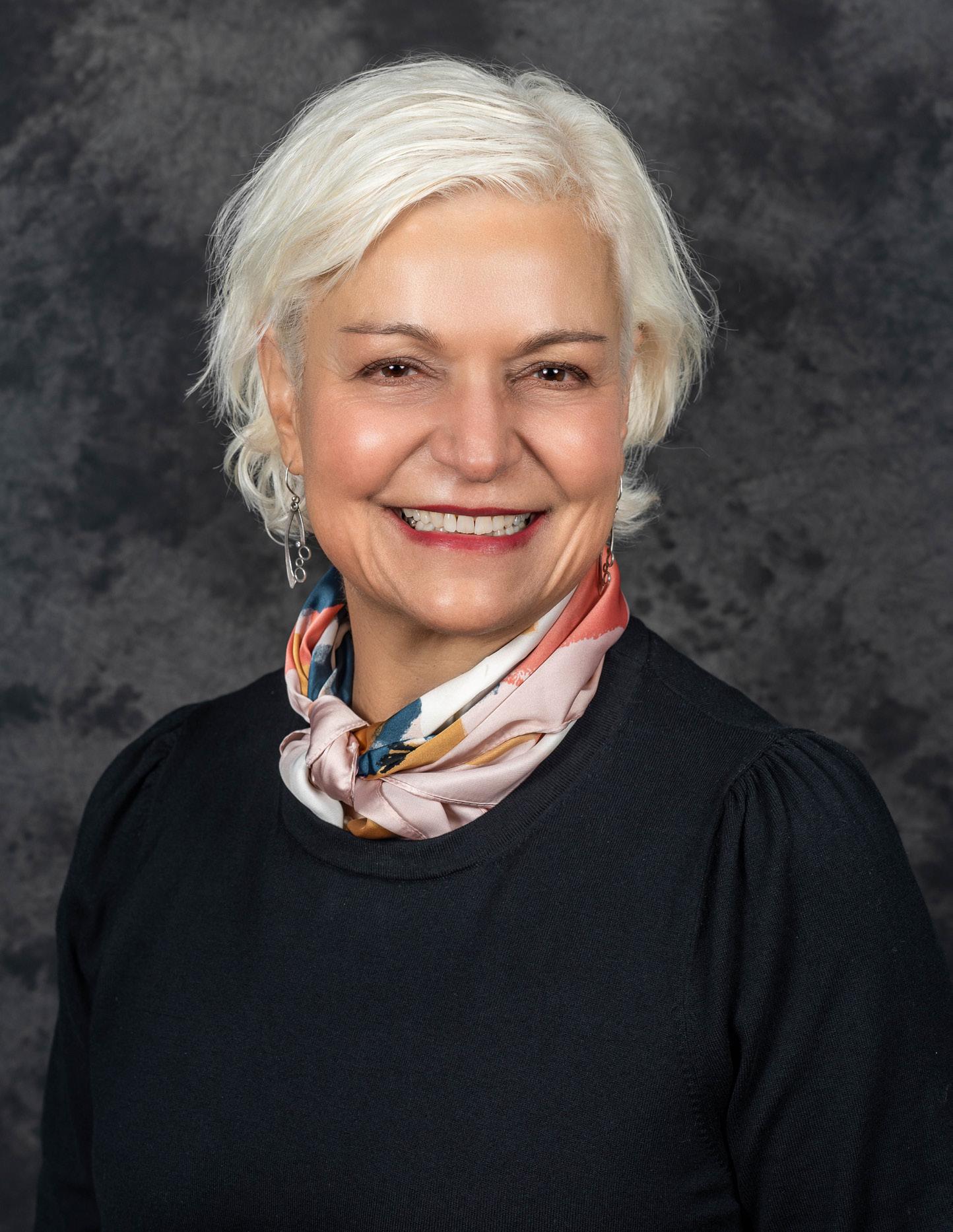
Q. Horizon has been around since 1975 and has provided mental health, addiction treatment and support services
for people in Western New York. What was the impetus to partner with Endeavor?
A. While we made it official on Nov. 14, we’ve been working toward this for a while. Today’s environment is one that is conducive to building on existing strengths in the system. In
order to provide quality healthcare, we need a robust infrastructure and that is expensive. This allows us to share and expand specialty resources, utilize Horizon’s training — called Horizon University — develop data used for decision making and share IT and data analytics. It makes sense to save expenses when programs are already in place at our agencies.
Q. What have you learned about the similarities and the differences between Horizon and Endeavor?
A. Mental health conditions and substance abuse problems are complementary services that overlap at the top. Endeavor does different things that we don’t do. For example, Endeavor provides rehab programs. They also do a lot of on-ground partnering with the police, including interventions. We do different things in different territories for the most part. It all adds depth to services, which means the community wins. Our service areas are local and also extend into Genesee and Monroe Counties in Rochester.
Q. What are some of the common disorders people are facing with their mental health?

A. Anxiety and depression are the biggest issues. Depression, which is not always assessed properly, is a serious mental illness and has a tremendous impact on one’s life. Alcohol abuse is still a big problem followed by opioids. People use drugs and alcohol for different reasons.
Q. Recently Stephen “tWitch” Boss, a former “Ellen DeGeneres Show” DJ and “So You Think You Can Dance” allstar, died at the age of 40 by suicide. When a high-profile individual takes his or her life, does it create an uptick in calls to your agency?
A. Yes, there has been a small increase in calls. When these terrible things happen, it raises awareness of mental health challenges, the need for help, which is not always easy to ask for. The most important thing is to talk about those uncomfortable feelings. Since the pandemic, there have been more people seeking help. The sooner someone comes in for care, the better the outcome. During the height of COVID, almost everyone experienced mental health symptoms. That shared experience helps take away the stigma of needing help.
Q. How is Horizon funded?
A. We receive funding from a number of sources: third-party Medicaid and Medicare, state funding, grants, fundraising events and the generosity of families who have needed our services.

Q. Like so many employers, have you found it difficult to find staff?
Horizon Health CEO says agency saw an uptick in phone calls after the death of Stephen “tWitch” Boss, a former “Ellen DeGeneres Show” DJ, who recently died by suicide at age 40.
A. Staffing is a constant need. We update job openings on a regular basis.
Q. What’s the best way to reach Horizon?
A. Our website: www.horizonhealthalliance.org. Our patient engagement center can be reached at 716-831-1800.
Q. What’s your mindset as we embark on a new year?
A. I’m always realistic about the problems and optimistic that we can do better.
January 2023 • IN GOOD HEALTH – Buffalo & WNY’s Healthcare Newspaper • Page 7
Horizon Health’s CEO discusses the alliance between Horizon and Endeavor Health Services and how the combined organization will provide quality healthcare in a more efficient way
with Anne D. Constantino
Don't Miss the February Issue Golden Years Special Aging Hearing Aids Vision Awareness Advertise and reach nearly 80,000 healthconscious readers 716-332-0640 editor@bfohealth.com
By Gwenn Voelckers
Finding Your ‘True North’ in 2023
’ve discovered that a key to living alone successfully is to determine who you really are and what you want from life. My own path to contentment took some time, some growing pains — setbacks as well as successes — and some aching losses before I found my “true north.” It hasn’t always been easy, but it’s been well worth the journey.
The reward has been a life on my own filled with more peace, freedom and joy than I could have imagined.
The journey began with a set of soul-searching questions (below) to identify and clarify my beliefs, values, likes and dislikes. I was careful to focus on what matters to me and to steer clear of “shoulds” and other people’s agendas.
The result? I created a list of personal principles and preferences that illuminated a way forward and shaped my future as a self-sufficient, independent woman.
Now, in the happy third chapter of my life, I am comfortable being me and expressing my true self.
In no particular order, below are just a few examples of my insights
I(some profound, others practical) that have inspired and guided me:
n Gratitude, forgiveness and loving kindness are life staples to embrace, practice and model on a daily basis.
n Gathering with friends and family around a fire, kitchen counter or dining room table enhances life. It’s warm, relaxing, and relevant — life essentials in my book.
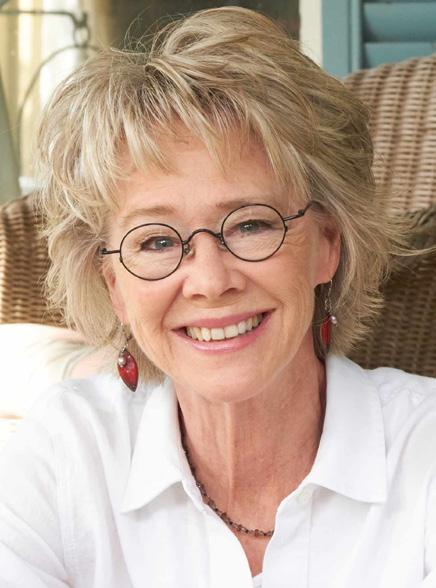
n If I am unhappy with an aspect of my life and choose to stick with the status quo, nothing will get better.
n Hardship, failure and loss can build strength and self-awareness.
Taking time to turn inward can create space for reflection and renewal of the spirit. Remember: After a rain there are rainbows.
n An honest-to-goodness listener (not a pretend listener) melts my heart.
n An honest-to-goodness friend who shares her joys, deepest fears, regrets and dreams melts my heart even more.
n Music makes life better. I enjoy playing and listening to all genres of music, but I always return to the Great American Songbook.
n As an introvert, I find that solitude, nature and meditation recharge my batteries. But that’s me. Others may be energized by morestimulating experiences and venues.
n Letting go of old ways of thinking, a poor self-image or of destructive thoughts, behaviors and habits can free you up to embrace life’s blessings.
Snowbird Packing Tips
By Chris Holbert
If you’re a snowbird prepping for the migrating season to warmer weather for the winter, then you’re likely aware of how popular this snowbird season is going to be.
With a readily available vaccine and boosters, less travel restrictions and a hunger to leave town when temperature dips, more snowbirds are expected to travel.

But whether you’re a seasoned veteran or even a first timer, it can be difficult to know what exactly is important to bring, and what can stay at your summer home until you’re back.
Double checking bags is crucial before loading up to be sure all your bases are covered, including all the necessities. But overpacking can mean more work later and less space for what you need the most. Here are a few tips on what you should be sure you bring with you this snowbird travel season:
Important documents
While it might be normal to keep an ID on you, it may not be so common to keep important documents
like your passport, copies of prescriptions from doctors, insurance policies for homes, etc. close by when you’re traveling for the winter. If they’re left behind in a filing cabinet or folder at home they won’t be much use to you if you need them. Find a safe and secure way to transport important documents (or copies) of things you might need. You never know when that information will be useful, especially spending months away from them.
Medicine/Prescriptions
While you might have stops along the way where you can pick up medicine, or even have a pharmacy at your destination that you like to go to for prescriptions, it’s important to still bring along your medicine or prescriptions, and even ensure you have extras. If something happens during your trip, or your pharmacy is behind on prescriptions, you could be without vital medications for a day or even longer. Bring enough for a few extra days than you think you might need.
n Gardening is a great teacher. Fertile ground exists in each of us, and a little planning, caretaking and patience can produce beautiful results.
n Solo travel is an adventure not to be missed. It’s good for the mind, deepens the soul and fosters confidence.
n Living alone doesn’t mean being alone. We are social beings. We need each other. Relationships are the glue.
Compiling my full list of insights took time and thought. For those coming out of a long relationship or deep loss, determining or rediscovering “who you really are” can be a daunting process.
After years of focusing on the needs and desires of a spouse and family, many discover that, somewhere along the way, they have disappeared around the edges and lost their own sense of self.
Rediscovering yourself and identifying those things that bring joy and meaning in your life can turn living alone into an adventure of the spirit.
Once you establish your individual interests and means of self-expression, you may find that time alone and quieter moments no longer feel empty.
Below is an exercise to help you get back in touch with your true self. These are but a few of some probing questions to contemplate on your road to self-discovery.
SPEND SOME TIME ANSWERING THESE 10 QUESTIONS
1. Search back. What hobbies did you pursue as a child that gave you joy? What did you do particularly well or (perhaps secretly) take pride in?
2. More recently, when do you completely lose yourself in something? What activities make you feel alive and complete, as though
nothing is missing?
3. What do you hold most dear?
4. How do you want to be remembered?
5. What is your biggest regret? If you could have a “do-over,” what would you do differently? Maybe seek help sooner? Or embrace and share a truth about yourself or situation?
6. How would your life change (or get better) if you were a more curious and open person?
7. What brings tears to your eyes?
8. If you were to dedicate your life and resources to a particular cause or charity, what would it be?
9. What does your perfect day look like?
10. How do you want to describe yourself and your life a year from now?
THEN, TAKE ACTION
After answering these questions, ask yourself how you can use these insights to influence the direction of your life. What can you do today to reconnect with a past love or pursuit, to delve more deeply into an existing interest or to fulfill a new healthy lifestyle or passion?
When you identify your values and the things you love or need to do, and pursue them, you will feel more integrated and in touch with your true self. You’ll be spending your time immersed in pursuits that bring you personal satisfaction and strength — pursuits that reinforce who you are and who you want to become.
Those of us who live alone have the gift of abundant time to ourselves. Use it wisely. Use the time to get to know yourself all over again.
With each passing day, I am confident you’ll find your internal compass, unique to you, pointing north — your true north.
Technology
While it’s true that you should have a charging pack, car charging adapter or other technology with you to keep your device on at all times during the trip, consider other devices that can be utilized where a cell phone can’t. Mobile Personal Emergency Response Systems (mPERS) devices are a must-have for snowbirds. If you can’t dial your phone, or it’s not within reach to call for help, mPERS devices can provide a way to get in contact with emergency services at the push of a button. They can also relay your exact location.
Non-seasonal clothing
Although you’re attempting to go to warmer weather, expect the unexpected. It can begin to unexpec-
tantly cool off or warm up wherever you’re headed due to unpredictable weather. Consider bringing a few articles of clothing you think you might not necessarily need unless the weather is weird. Instead of having to buy something new and bring more back to your summer home, this can save you time, money and space by being prepared.
Chris Holbert is the chief executive officer at SecuraTrac, a company that develops, markets and sells a suite of mobile safety solutions focused on improving senior and employee health and safety through mobile, location-based technology and state-of-the-art, cloud-based platforms. For more information, visit https://securatrac.com.
Page 8 • IN GOOD HEALTH – Buffalo & WNY’s Healthcare Newspaper • January 2023
Live Alone & Thrive
Practical tips, advice and hope for those who live alone
New Year, New Me?
By Jane Schmitt
Love them or hate them, New Year’s resolutions are an ageold tradition that represent an eternal hope by people everywhere to improve their lives in one way or another.
As the calendar rolls from one year to the next, you know what’s coming: an onslaught of declarations to cut down on junk food, learn something new, jump-start an exercise routine, quit smoking, create a budget, become more mindful or travel the world.
The list goes on and on as men and women decide that it’s a perfect time to refocus, recharge and generally DO better and BE better.
“I think that it’s become a thing,” said Barbara Kapetanakes, a doctor of psychology and 2022 president of the New York State Psychological Association. “We are expected to make New Year’s resolutions because it has become part of our vernacular, and we feel that turning over a new leaf at a new year makes some sense. A ‘new year, new me’ kind of thing. It carries a sense of optimism and the confidence that we can make positive changes in our lives.”
For many, resolution-making is as much a part of life as indulging during the holidays. In fact, that often is the trigger for wanting a fresh start.

“The connection between the end of one year and the beginning of another and the winter holidays is significant,” said Kapetanakes.
“We all overindulge at this time of year on those habits we often resolve to change. We eat too much from Thanksgiving until Jan. 1. We go to parties and probably drink more than usual. We may slack off on other healthy habits like our exercise programs or preparing healthier foods for the week because we are caught up in holiday craziness.”
She continued: “As we’re making what we see as mistakes in our lives, we are thinking ahead and saying, ‘Well, once I get past Christmas or once I have one more hurrah on New Year’s Eve, I will do better after that.’
It makes the fun we’re having by overindulging something we have to negate as soon as the calendar page turns. We should have fun, but we should also try to get back on track after our fun.”
MAKING A CHANGE
Resolutions are a “fluid process” for Marcy Abramsky, a licensed clinical social worker in Buffalo, but she understands why so many men and women look to make a change around this time of year.
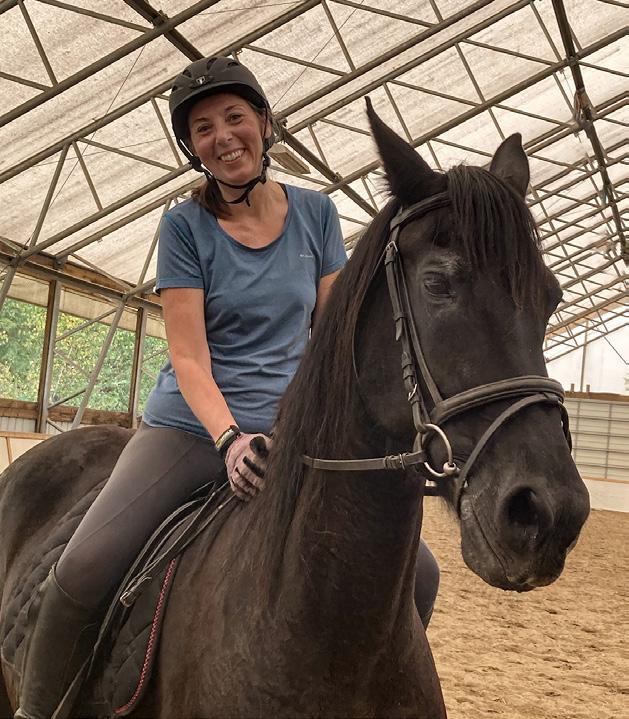

“New Year’s may be a motivating time for people,”
Abramsky said. “This includes sales on items that support many resolutions — fitness memberships, organization products, tech, clothing — anything companies can equate to change.”
At its core, a resolution is rooted in behavior, she added.
“Cognitive behavioral strategies can propel you in meeting your resolutions,” she said. “I believe that if New Year’s is a time that motivates people to make a change that they’ve been thinking about, go for it.”
PROGRESS, NOT PERFECTION
Next comes the challenge of following through on a resolution to start volunteering in the community, for example, or to revamp your diet or be more patient with family and friends. You might go in with a gungho attitude and high expectations, but that firm commitment sometimes fades away amid the pressures of daily life.
If that happens, don’t beat yourself up, experts suggest. Broken resolutions happen; it’s never a simple matter of success and failure.
“Change is hard. Behavioral change is hard,” said Erin M. Moss, a licensed mental health counselor and board vice chairwoman of the nonprofit Mental Health Advocates of WNY. “There’s this thought that it has to happen right now. ‘I have to get it together on this date to start the new year all fresh.’ That concept is great, but we’re all human. It doesn’t have to work that perfectly. I’m all about trusting the process.”
Her advice? Stay the course. Slow and steady wins the race for so many things in life, including resolutions.
“You have to set realistic goals,” Moss said. “You have to give yourself some leeway and room for progress.”
Here’s an expert tip: Break down bigger goals into mini goals to enhance your chance of success, said Vanessa Tirone, Ph.D., a licensed clinical psychologist in Buffalo. Avoid resolutions that are too broad and instead try to outline specific pieces of your plan to stay on track.


“Oftentimes goals fail because we are too ambitious to start and we may not think through all the steps involved in reaching them,” Tirone said. “The thinking behind breaking up a goal into smaller pieces is that we’re much more likely to have early successes, which can motivate us to keep going and keep working at it.”
TOP 10 MOST COMMON RESOLUTIONS
Lose weight.
Get organized.
Learn a new skill or hobby.
Live life to the fullest.
Save more money/ spend less money.
Quit smoking.
Spend more time with family and friends.
Travel more.
Read more.
SOURCE: www.goskills.com
January 2023 • IN GOOD HEALTH – Buffalo & WNY’s Healthcare Newspaper • Page 9
2.
3.
4.
5.
6.
1. Exercise more.
7.
8.
9.
10.
L to R: Marcy Abramsky, a licensed clinical social worker in Buffalo: “New Year’s may be a motivating time for people,” she says; Erin M. Moss, a licensed mental health counselor and board vice chairwoman of the nonprofit Mental Health Advocates of WNY; ; Vanessa Tirone, Ph.D., a licensed clinical psychologist in Buffalo.
Experts discuss why we make (and break) new year’s resolutions. “You have to set realistic goals,” says a local mental health counselor
Barbara Kapetanakes, a doctor of psychology and 2022 president of the New York State Psychological Association. “We are expected to make New Year’s resolutions because it has become part of our vernacular,” she says. One of her goals for this year is to ride her horse more often
One in 10 Teens Have Sexted, Many See Porn by 6th Grade: Study
Ahigh number of preteens and teens in the United States have viewed pornography and many have also sent or received nude or seminude photos — sexting — over their smartphones, a new study reveals.
“The prevalence rates we found in this study suggest that school counselors must be prepared to talk about sexting and pornography use with students, and to change the narrative about these behaviors,” said Amanda Giordano, lead author of the study and an associate professor in the University of Georgia Early College of Education in Athens.
“It’s important that students know that sending a sext is not a new requirement for romantic relationships and that pornography does not reflect expectations for sexual activity,” Giordano added in a university news release.
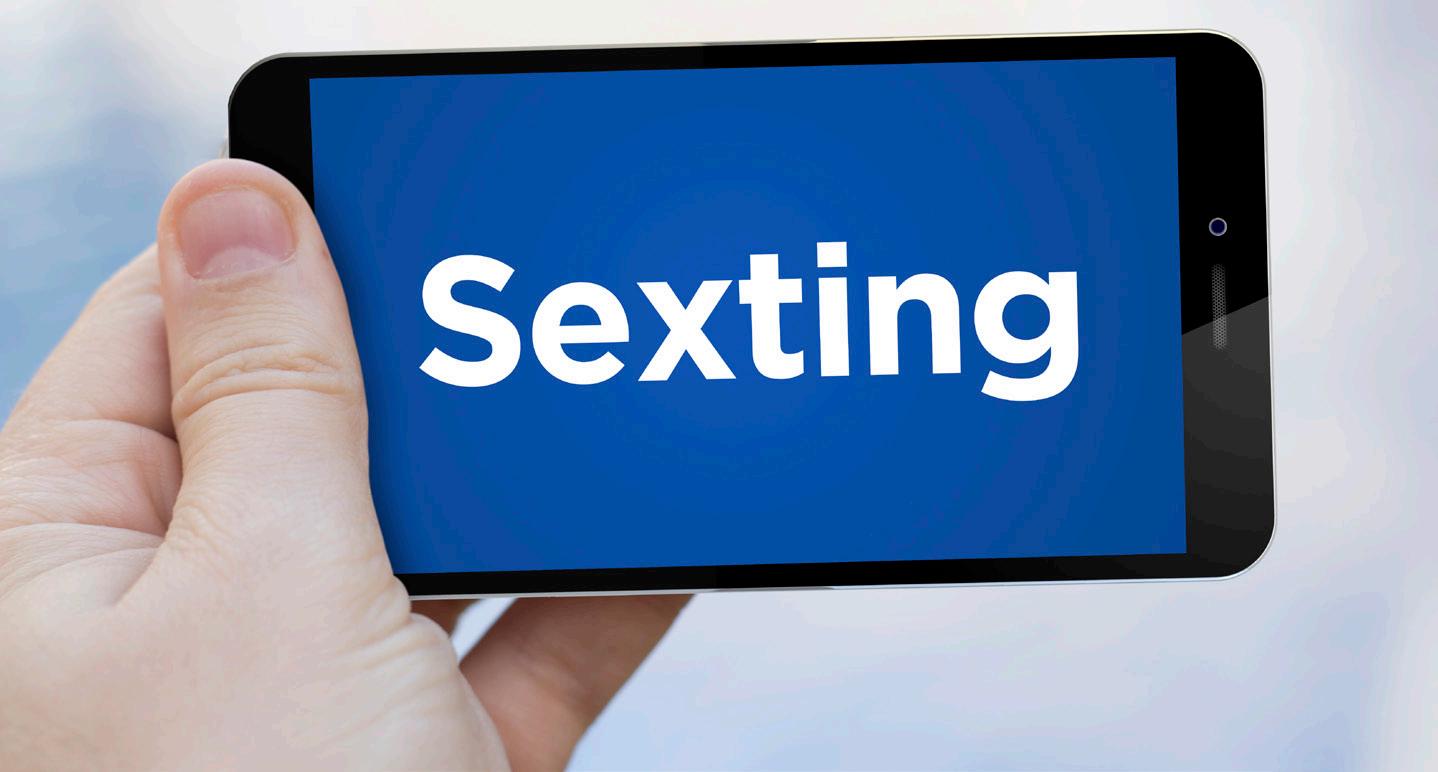
For the study, the researchers questioned 350 students, aged 12 to 17 years. The investigators found that 15% had sent a sext to someone. About 25% had ever received a sext.
About 25% had ever been asked to send a sext. About 12% said they had felt pressure by someone to send a sext in the past year.
This pressure was concerning because of the unintended consequences of sexting, such as having the picture forwarded to others, put online or used as a form of blackmail to get the person to meet other demands, the researchers said.
“If your boyfriend, girlfriend or peer is asking for a sext, let’s talk through some of the possible risks,” Giordano said. “These are conversations that we need to have with adolescents, and they can happen at home or in schools. Adults need to keep up with technology and current trends so that we’re not just giving youth access to smartphones and hoping they make wise decisions. We need to prepare them for potential risks.”
About 50% of adolescents said they had been exposed to pornography. On average, kids were exposed to pornography for the first time at age 11.5 — typically the age of Amer-
The Plunge Into Cold Water Comes With Risks
ican 6th graders and younger than previous studies have suggested.
Increased smartphone access among teens and the ease of finding free internet pornography likely drove that age drop, Giordano said.
More than one in three of the participants said they had viewed pornography at least once in the previous year. And 8% of the students said they watched pornography about every day.
Pornography use was significantly more common among males, the study found.
“Pornography use has been linked to a range of negative outcomes among children and adolescents. And pornography is a terrible sex education teacher for kids. However, for children who haven’t had conversations about healthy sexuality, they might not have anything to compare it to,” Giordano said.
“What we see from the research is that adolescents are developing their sexual scripts and beliefs about sex from what they’re seeing in pornography, which can have varying degrees of violence, aggression and degradation of women,” she added.
It’s important for schools to have
a sexting policy already in place, Giordano said. Then when a student comes to a staff member with a picture they have received or are being asked to send, the school will have a plan for what to do.
“Schools need to have conversations with legal counsel about what the sexting policy should look like in their state given the child pornography laws, so they already know how they will respond,” Giordano advised.
Providing accurate information to students about pornography and the risks of sexting is key as well, she said. For example, explaining that pornography uses actors and often isn’t an accurate depiction of healthy, consensual, safe sexual practices is important.
“We’re teaching students to be good citizens, and that should include promoting responsible, healthy tech use, known as digital citizenship,” Giordano said. “Technology isn’t going anywhere, so we need to set students up for success by teaching them how to be good global, local and digital citizens.”
The report was published online recently in Professional School Counseling.
Jumping
into icy cold water in the dead of winter might seem like a crazy idea, but the so-called polar bear plunge has become a popular activity, often paired with raising money for charity.
Boosting its allure is another anything-but-hot trend, the practice of cold therapy, based on the belief that exposing the body to cold water and air may strengthen the immune system and improve cardiovascular health.
Actor Chris Hemsworth of “Thor” fame helped promote the idea when he took an Arctic swim without a wetsuit as part of National Geographic’s “Limitless” television series.
But evidence supporting the health benefits of cold therapy remains scant. Experts caution that for some people, shocking the body with cold water could do more harm than good, even at less-than-frigid temperatures. The National Center for
Cold Water Safety warns that sudden immersion in water under 60 degrees Fahrenheit can kill a person in less than a minute.
“That cold shock can be dangerous,” said physician Jorge Plutzky, director of preventive cardiology at Brigham and Women’s Hospital in Boston. “Whether there are health benefits or not is not clear and has not been established.”
Plunging the body into cold water triggers a sudden, rapid increase in breathing, heart rate and blood pressure known as the cold shock response. That can cause a person to drown within seconds if they involuntarily gasp while their head is submerged. The shock also places stress on the heart and makes it work harder.
Within minutes, the loss of heat begins causing other problems.
Blood rushes away from the extremities to the body’s core to protect vital organs, Plutzky said. That
leaves the arms and legs without good circulation, which can lead to a loss of strength and coordination. The rapid loss of heat also can lead to hypothermia, making it harder to think clearly or move well. Being immersed in cold water triggers hypothermia faster than just being out in the cold, because water takes heat away from the body 25 times faster than air.
Some studies suggest that people who adapt to cold water immersion through routine ice bathing or win-

ter swimming may reduce inflammation and other cardiovascular risks. But others have found evidence of higher levels of troponin in people who compete in winter swims, suggesting that prolonged cold water immersion could lead to heart muscle damage.
“I would caution against it for anyone with a cardiac history,” said Plutzky, who noted that little research on the health effects of cold water immersion included people with heart conditions.
Page 10 • IN GOOD HEALTH – Buffalo & WNY’s Healthcare Newspaper • January 2023
So-called polar bear plunge has become a popular activity but doctors raises concerns about practice
Among new developments, 2023 should see the first approved therapy targeted to patients with the HER2-low breast cancer subtype, improvement in treating sickle cell disease


 By Deborah Jeanne Sergeant
By Deborah Jeanne Sergeant
The year 2023 should prove a banner year in medicine. Area experts share a few of the big advances they expect soon.

Physician William Dahut, chief scientific officer for the American Cancer Society, looks forward to the introduction of fam-trastuzumab deruxtecan-nxki (T-DXd, Enhertu) to treat patients with unresectable or metastatic HER2-low breast cancer.

“This is the first approved therapy targeted to patients with the HER2-low breast cancer subtype, which is a newly defined subset of HER2-negative breast cancer,” Dahut said. “In the past, the vast majority of women were considered to be HER2 receptor negative — probably 80%85% — and thus were not eligible for this targeted therapy.”

Data on fam-trastuzumab deruxtecan-nxki has shown it is both safe and effective for the HER2-low breast cancer subtype, probably 60% of those who in the past were considered negative.












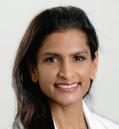



The treatment “gives another option besides chemotherapy and endocrine therapy,” Dahut said. “This includes some women in the past who were considered ‘triple negative.’”


He anticipates availability of the new drug by late summer.


Improvement in treating sickle cell disease is among the advances that excite Mike Merrill, chief medical officer of the Medical Society of Erie County and chief medical officer at Brook Health, a healthcare app development firm in Seattle.
said. “There’s a variety of models and a lot of remote monitoring involved.”




His firm enables remote transfer of data so patients and healthcare providers can stay on the same page. Telemedicine visits with a physician, nurse practitioner or physician assistant can help low acuity patients improve at home in familiar, more comfortable surroundings.
“It will improve care for chronic disease, reduce re-hospitalization and increase access to expertise between visits,” Merrill said. “Traditionally, medical care is you go to the doctor’s office, you get instructions, you follow it for three-six months and you get checked again and everything is reviewed. There’s time between visits where you have to figure out everything on your own and no information is getting back to your provider.”
“We have a slow-moving miracle in treatment of [sickle cell disease]. We’re going to have genetic therapy so the gene expression in the bone marrow can be fixed so these extremely painful crises and shortened life will be eliminated.”
– Physician Mike Merrill, chief medical officer of the Medical Society of Erie County




“We have a slow-moving miracle in treatment of this disease,” he said. “We’re going to have genetic therapy so the gene expression in the bone marrow can be fixed so these extremely painful crises and shortened life will be eliminated.”
Genetic therapy for sickle cell disease is in the final processes of approval and Merrill thinks it should be available within the next year or possibly two. He has also seen a shift towards more healthcare delivery at home, including “hospital at home” for people who have recovered to an extent but still require monitoring.
“This will improve outcomes and keep people happier,” Merrill




He cited blood pressure as one example. Checking it only every three months could mean up to three months’ uncontrolled blood pressure. Feedback that is closer to real time can help providers keep closer tabs on patients. While this does place more burdens on providers, Merrill said that billing codes for remote care would ensure providers would receive reimbursement for their time. Plus, curtailing issues before they become huge problems would in the long run save providers’ time and spare patients more extensive treatment.
Merrill also thinks that using psychedelics to treat medication-resistant post-traumatic stress disorder and depression will become more mainstream.
“This is another slow-moving miracle,” he said. “Paradigm changes. You’ll see more and more of that used. It’s controversial due to the drug regulatory environment. Psilocybin has therapeutic potential but is classified as an illicit drug by the FDA.”
Psilocybin is psychedelic naturally occurring in fungi.


January 2023 • IN GOOD HEALTH – Buffalo & WNY’s Healthcare Newspaper • Page 11
Next Big Thing: What Innovations We Will See in 2023?
SEND US YOUR FEEDBACK AND GET A FREE SUBSCRIPTION! NAME ADDRESS WHAT DO YOU LIKE ABOUT IN GOOD HEALTH NEWSPAPER? CITY/TOWN STATE ZIP Yes! Send me six free issues of In Good Health to the above address, beginning with the upcoming issue. P.O. Box 550, Amherst, NY 14226 Disclaimer: your comments may be used for marketing purposes. WHERE DID YOU PICK UP THE PAPER? In Good Health: WNY’s Healthcare Newspaper provides health and wellness news that is trusted by experts from across the region. Send us your feedback and receive 6 free issues of In Good Health mailed right to your home or business! ✷ Free online hearing tests you can take at home. P.17 Talking to a loved one about a move to assisted living. P.16 ✷ A Q&A with Angela Marinucci, Erie County commissioner of senior services. P.14 ALSO THIS ISSUE LAWYER,SURGEONPhysician StutiTambar always wanted to make a difference women’s health breast surgeon and as lawyer she does just that.P.4 BFOHEALTH.COM NOVEMBER 2022 • ISSUE 97 FREE 1 in 7 U.S. High School Students Now Vapes Teen vaping continues at concerning levels,U.S.health officials report.Page 7 Top Issues Affecting Seniors Today P.13 ARE YOU THANKSGIVINGFACING ALONE? 8 THINGS YOU NEED TO ABOUTKNOW ALLERGIES5P. 10 tips on choosing the ideal healthy gift for a friend or loved one 13 HEALTHY GIFTS FREE RICHARD CASTALDO,M.D. Hospicechiefin NiagaraFallsexplains end of life care. Unhealthy Western New York Report: Erie and Niagara rank among the least healthy in New York P. 5 5 P. THINGS YOU NEED TO KNOW ABOUT RSV, THE FLU HAPPY HOLIDAYS! BFOHEALTH.COM DECEMBER 2022 ISSUE
Physician William Dahut, chief scientific officer for the American Cancer Society.
Better Sooner with Aquatic Therapy
By Deborah Jeanne Sergeant
For people recovering from an injury or joint surgery, aquatic therapy may be helpful in getting better sooner.
Like land-based (“dry”) physical therapy, aquatic therapy doesn’t require a physician’s prescription and most insurers cover treatment for a total of 30 days. At that point, a prescription would be required.
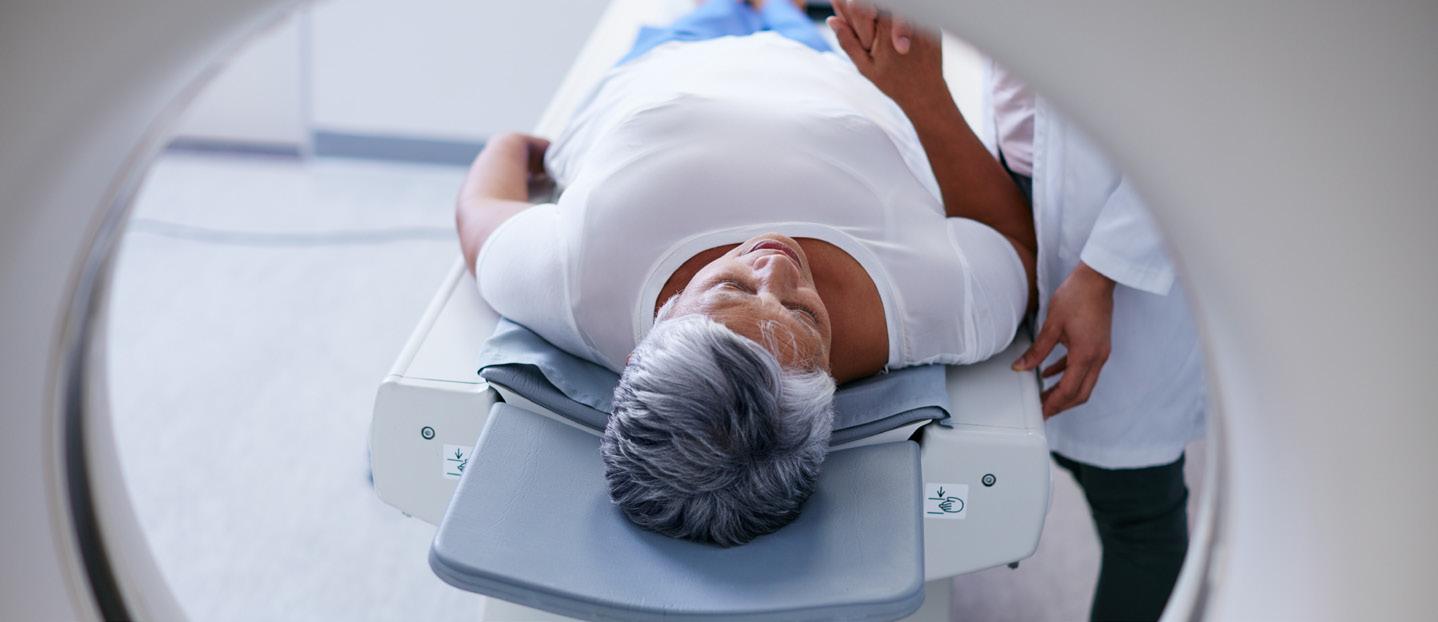
“Aquatic physical therapy is done in a heated water environment 94 to 96 degrees [F],” said Martin Koslosky, physical therapist with Amherst Physical Therapy in Buffalo. “It helps relax muscle and improve circulation through vasodilation. The buoyancy of the water helps patients unweight joints that are hurting them. Moving through the water provides resistance which helps strengthen muscles. Hydrostatic pressure helps with circulation. It’s good for people with rheumatoid arthritis, arthritis, fibromyalgia or people who can’t tolerate land-based therapy due to medical status.”
Amherst Physical Therapy uses aquatic therapy to work with pain in the back, hip, knee, ankle, shoulder and neck, among other reasons. In addition to rehabilitation, Amherst Physical Therapy offers “prehab” in anticipation of joint replacement surgery to help patients build strength without as much pain.
Aquatic physical therapy can also help people who need to lose weight but struggle to exercise because of their weight.

Amherst Physical therapy has begun working with bariatric patients who often are instructed to lose weight before their procedure but cannot tolerate land-based exercise.
“It’s a great way to start and the patient can transfer to a land-based exercise program later on,” Koslosky said.
Aquatic physical therapy may involve more than just moving in the water. Physical therapists may use devices in the pool like noodles and flotation boards to help with movement or to encourage patients to stretch further and challenge themselves.
Most therapy pools are relatively shallow, as they’re not meant for diving or swimming laps. Some offer windows on the sides so therapists can see the patients’ movements without the distortion of looking through the water. Some have an optional current to help patients
improve balance, strength and range of motion. Benches in the pool can allow patients to perform seated exercise.
Unlike land-based exercise, the pool challenges their posture, balance and core strength. But the water reduces risk of falls.
“You can do anything in the pool that you can on the land, but the offloading is beneficial to patients,” said Melanie Kehoe, doctor of physical therapy at Genesee Valley Physical Therapy in Webster.
The water also helps patients who have cerebral palsy, multiple sclerosis or impairment from a stroke if land physical therapy is too challenging.
People with fibromyalgia often see improvement in their ability to move.
Nuclear Medical Technologist: Salary of $84,090 No advanced degree needed
By Deborah Jeanne Sergeant
If you possess diverse interests in medicine and science, working as a nuclear medical technologist might be for you. It also takes a close attention to detail, as these technologists work with radiation.
“We use radio isotopes for diagnosis and treatment,” said Robert Miletich, chairman of the department of nuclear medicine in the Jacobs School of Medicine and Biomedical Sciences at UB. “Because we’re dealing with radiation, there are a number of rules that have to be followed to protect the people and public from the effects of radiation. The rules are imposed even by the federal government.”
Each patient only receives the equivalent of the radiation received in a CT scan. Nuclear medical technologists “prepare, administer and measure radioactive isotopes in therapeutic, diagnostic, and tracer studies using a variety of radioisotope equipment,” stated the Bureau of Labor Statistics.
In addition, they “prepare stock solutions of radioactive materials and calculate doses to be administered by radiologists; subject patients to radiation; and execute blood volume, red cell survival, and fat absorption studies following standard laborato-
ry techniques.”
The Bureau of Labor Statistics further states that the annual mean wage in the Buffalo area is $84,090. That’s pretty good for a career that requires only a bachelor’s degree.
Candidates for working in nuclear medical technologists must also pass a board exam, which when passed gives them a nationally recognized credential.
Miletich said that good skills in math, science—particularly in biology—and physics are helpful “as we’re dealing with radiation. It’s good for someone reasonably intelligent and responsible. They have to have a certain aspect of empathy as you deal with sick patients every
single day. It does require multiple skills.”
Miletich called the educational requirements “intense” and “very rigorous.” Plus, the required GPA is a B average.
“I did this because I’m a brain scientist,” Miletich said. “What we do in all nuclear medicine is study the physiology of different organ systems. These radiologic drugs mimic molecules already in the body. It’s mostly physiology. I wanted to be able to study the functioning brain non-invasively and there’s no better way than nuclear tags. It’s a very exciting field. The fact that we can do these things in humans and not have to do anything invasively is how we
“Fibromyalgia patients don’t necessarily think of aquatic physical therapy as a first line thought as far as treatment,” Kehoe said.
The same goes for people who want to start exercising but feel that traditional exercise is too hard because of chronic joint pain and fear injury.
Physical therapists offering aquatic therapy take continuing education credits to learn how to apply physical therapy principles in the water.
Few conditions contraindicate aquatic physical therapy. For example, an open wound or incision would prohibit it or health conditions that are sensitive to heat. Patients should ask their primary care providers about any concerns.
cure diseases. We study the disease itself, not models.”
Miletich is board-certified in both neurology and nuclear medicine.

Nuclear medical technologists can eventually take on administrative roles in hospital leadership, segue into research, or enter academia.
The demand for the career is high, as every hospital needs nuclear medicine technologists. The retiring baby boomers are not being replaced at a sufficient rate to keep up.
“I don’t see this career going away,” Miletich said. “The US is falling behind the rest of the world in nuclear medicine because there’s not been great support. All hospitals use nuclear medicine if they have radiology.”
Paradoxically, only a limited number of schools offer degrees aligning with this career path. Susan Tiby, assistant director of nuclear medicine at Upstate at Community Campus, said that only three colleges in New York offer, University at Buffalo, Stony Brook University on Long Island and Manhattan College. And, each school only takes around a dozen candidates each year.
“There are numerous people retiring in the next three to five years and there’s already a shortage,” Tiby said. “There will be a lot bigger shortage soon.”
She likes the career because “you’re helping a variety of patients from inpatients to oncology to cardiac patients. It’s rewarding to know you’re helping people.”
Page 12 • IN GOOD HEALTH – Buffalo & WNY’s Healthcare Newspaper • January 2023
Martin Koslosky, physical therapist with Amherst Physical Therapy in Buffalo.
CAREER IN HEALTH
By Anne Palumbo
Whether you’ve had a bad day, a painful break-up or a normal day dogged by the chills, we all have comfort foods that we turn to when we need some extra TLC.
They could be dishes that are creamy and warm, or recipes that mom used to make, or simply foods that cheer us up!
But which foods are considered comforting can be vastly different based on where you live, what your sex is, and how old you are.
According to the Harris Poll, an American research company that has been tracking the behaviors of American adults since l963, America’s favorite comfort food is…pizza!

Pizza?
Frankly, I thought pizza was America’s all-time favorite food, no matter the need for comfort; but apparently it’s our go-to comfort food, as well.
When we’re not reaching for pizza, Harris noted, we’re getting our culinary hugs from chocolate, ice cream, mac and cheese, chips and hamburgers.
Another research company, which broke down Americans’ favorite comfort foods by state, begged to differ. Basing their study on comfort recipes with the highest Google search volume, the lighting retailer e-conolight revealed that grilled cheese was the most popular comfort food overall and chosen as the top pick in six states: California, Illinois, Maryland, New Jersey, New York and Virginia. Fried chicken was the second most-searched comfort food, winning out in Delaware, Georgia, Louisiana and Texas, followed closely by chicken and waffles, chili and pot roast.
A few unconventional favorites? Iowa’s monkey bread and Tennessee’s chess pie.
Comfort food cravings differ between the sexes. In a study published in the Physiology & Behavior journal, researchers from the University of Illinois Food and Brand Lab concluded that “a person’s comfort-food preferences are formed at an early age and are triggered, in addition to hunger, by conditioned associations and gender differences.”
The study illuminated that while men find comfort in foods associated with meals prepared by their mothers (mashed potatoes, pasta, meat and soup) women find comfort from less labor-intensive foods (chocolate, ice cream and candy).
Put another way, what is comfort for men is work for women. Me? I scream for ice cream and so did my mom. My husband? Pasta and stew will only do.
Age also affects our comfort-food leanings. Research shows that younger people preferred more snack-related comfort foods compared to those older than 55. And that folks older
than 70 will take steak and potatoes over pizza any day!
In addition, the time of year affects our cravings, with winter months rousing our need for comfort foods most. Some researchers suspect fewer daylight hours may play a significant role. Since sunlight promotes the release of serotonin, a known mood-booster, and we’re getting less of it during the winter months, we’re more inclined to reach for foods that also prompt the release of serotonin: carbohydrates.
Other studies, however, suggest that nothing more than “feeling cooped up” is what’s sending us straight into the arms of serotonin-boosting comfort foods. Our family can certainly relate to that! When cabin fever strikes our house, we consume more popcorn, pasta, chips and bread than at any other time of year.
Of course, there can be consequences to easing the winter blues with food, especially if those foods involve comfort foods that run higher in calories, fats and carbs. On average, say researchers at Johns Hopkins University, we tend to gain five to seven pounds during winter months due to increased calorie intake. Weight gain aside, many comfort foods are not all that healthy to chow down on a regular basis, from salty chips to high-fat ice cream to refined-flour breads and pizza.
COPING WITH
How to cope during the long winter months when the urge to devour the entire casserole is besting your better instincts? Experts weigh in with some helpful tips to keep you on track.
• Let in the light
Early morning light is the most potent energy booster, so open those curtains and take an early morning walk. As mentioned, sunshine increases serotonin levels, which may help calm your food cravings. Also, consider changing your light bulbs to bright, full-spectrum bulbs that mimic bright summer sunlight.
• Keep moving
When it’s chilly outside, the desire to become one with the couch is monumental. But, all agree, staying active during cooler months is key to controlling weight, whether you walk with friends, head to the gym or work out with someone online. A new study, published in the journal Health Psychology, found that physical activity helps to suppress your appetite and boost your mood.
• Fill up first
Oh, those tempting party spreads full of warm, comforting food! Don’t
you just want to eat everything in sight? One way to manage intake is to fill up before you head out. Nutritionists recommend eating high-fiber foods, such as fruits and veggies that take longer to digest, and drinking a big glass of water. Same holds true for other outings and events where temptations abound: grocery shopping, dining out, food festivals, and Sunday football.
• Get plenty of ZZZs
Ever notice how hungry you feel after a poor night’s sleep? Or how strong your cravings are for certain foods like pancakes and donuts? It’s not your imagination. Studies show that even a single night of poor sleep changes your hunger and appetite hormones, leading to increased hunger and an uptick in calories consumed. When people got more sleep, researchers found, they were not only less hungry during the day; they were less likely to reach for sweet and salty foods.
• Give comfort foods a makeover Whether warm and gooey or rich and sweet, many comfort foods are not so comforting when it comes to calories, fats, sodium, and nutrition. But here’s the good news: it’s relatively easy to turn these diet-busters into healthier dishes without sacrificing taste. A few swaps to consider: substitute evaporated skim milk for cream, lower-fat ground turkey for ground beef, baked chicken for fried chicken, whole-wheat pasta (or veggies) for refined-wheat pasta, and low-fat plain yogurt for mayonnaise.
Adapted from skinnytaste.com 6 servings (250 calories each)
1 large head cauliflower, cut into 1-inch florets
1 tablespoon butter
2 teaspoons olive oil
½ cup diced onion
3 tablespoons whole-wheat flour ¼ cup water
2 cups 1% or 2% milk
1½ teaspoons Dijon mustard
1-2 teaspoons hot sauce (optional)
2 cups shredded reduced-fat cheese of choice, divided
1 teaspoon salt
½ teaspoon coarse black pepper ¼ teaspoon garlic powder (or more)
½ cup whole-wheat panko breadcrumbs
Preheat oven to 375 F. Lightly oil a 9 x 13” baking dish.
Fill a large pot with enough water to cover the bottom about 1 inch; season with salt; bring to a boil. Add the cauliflower, reduce to a simmer, and cover; cook until tender crisp, 6 to 7 minutes. Drain, pat between paper towels to dry, and transfer to the baking dish.
Heat butter and oil in a medium saucepan over medium-low heat. Add onions and cook about 3 minutes. Stir in flour and water, then reduce heat to low and cook, stirring continually, for 1 minute more.
Raise the heat to medium, then gradually whisk in the milk, mustard and hot sauce until combined and smooth. Lower heat and continue cooking, stirring throughout, until it becomes thick, about 5-6 minutes more. Remove from heat and stir in 1½ cups of the shredded cheese (¼ cup at a time), along with the salt, pepper, and garlic powder. Mix well, then pour over the cauliflower and gently stir to combine.
Top with breadcrumbs and remaining ½ cup cheese; bake until bubbly and golden, about 15 to 20 minutes. Switch to broil for 2-3 minutes to brown the top.

Anne Palumbo is a lifestyle columnist, food guru, and seasoned cook, who has perfected the art of preparing nutritious, calorie-conscious dishes. She is hungry for your questions and comments about SmartBites, so be in touch with Anne at avpalumbo@aol.com.

January 2023 • IN GOOD HEALTH – Buffalo & WNY’s Healthcare Newspaper • Page 13
Baked Cauliflower “Mac” And Cheese
What Makes Comfort Foods So Comforting? gnidroccA ot eht sirraH lloP , hcraesernaciremAna htynapmocta h sa b nee t r akc i n g t h e b e hav iors o f American a dults s incel963,America’sfavorite comfort food is…pizza!
skinny on healthy eating
SmartBites The
THE BEST CARE HAPPENS WHEN

At ECMC, each of us—from doctors, nurses, support sta , and specialists—is focused on not just healing the community but supporting each other at every turn. Our commitment to our employees starts with a rewarding work environment and continues through to our professional development programs. Whether you’re just starting out or you’re a seasoned healthcare professional, ECMC is the perfect t to further your career.
Join the ECMC family of caregivers at ECMC.EDU/CAREERS





Fish Oil, Minerals, Vitamin D, Magnesium, Selenium
— What Works?
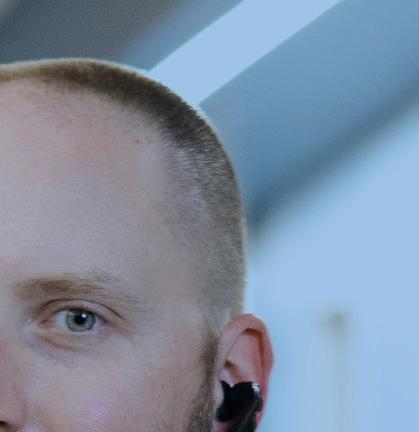


Manufacturers make all kinds of health claims, but can taking a dietary supplement actually lower your heart disease risk?
A comprehensive analysis of prior research suggests that in certain cases the answer is yes. Some types of supplements — such as omega-3 fatty acids, folic acid and coenzyme Q10 (CoQ10) do provide a cardiovascular leg up.
But many supplements were found to offer no heart health benefit of any kind, and others were potentially harmful.
“We evaluated 27 different types of supplements, and found that there are several that offered cardiovascular benefits,” said study author physician Simin Liu, director of the Center for Global Cardiometabolic Health at Brown University in Providence, Rhode Island.
These included omega-3 fatty acids, which reduced the risk of early death due to heart disease.
Other supplements that were shown to benefit the heart included folic acid, L-arginine, L-citrul-

line, Vitamin D, magnesium, zinc, alpha-lipoic acid, melatonin, catechin, curcumin, flavanol, genistein and quercetin.
But some common supplements had no long-term effect on heart disease outcomes or risk for Type 2 diabetes, Liu noted. They included vitamins C, D, E and selenium.
Beta carotene supplements, meanwhile, were associated with an increase in early death from all causes.
The findings are an outgrowth of a research review prompted by what Liu and his colleagues described as lingering confusion in the heart health community as to just how effective supplements can be at preventing heart disease.
The fact that foods rich in micronutrients can protect the heart has not been in question, said Liu, who noted that several large studies have linked a healthy diet to heart health benefits.
For example, micronutrients like antioxidants — which are present in the heart-healthy foods featured in
the Mediterranean diet and DASH (Dietary Approach to Stop Hypertension) — have long been linked to a reduction in oxidative stress. Because cell tissue damage brought on by such stress poses a threat to heart health, antioxidant-rich diets are thought to be protective, reducing the risk for a number of serious diseases, including diabetes.
What’s been less clear, however, is whether consuming vitamins, minerals, phytochemicals and antioxidants in the form of supplements might offer a similar advantage.
For the new study, Liu’s team poured through 884 prior studies


of supplements, some published as recently as this year. Collectively, the studies involved nearly 900,000 men and women.
In the end, the team concluded that some of the 27 micronutrient supplements under review did demonstrate some benefit.
Those included a number of omega-3 fatty acid supplements – including n-3 and n-6 fatty acids— which were found to help to reduce the risk for heart attacks and coronary heart disease, as well as the overall risk for dying as a result of heart disease.

Page 14 • IN GOOD HEALTH – Buffalo & WNY’s Healthcare Newspaper • January 2023
Research shows some supplements have no effect on heart’s health and can even be harmful
ECMC-35641_RecruitementAd_InGoodHealth_9.75x6.69_M Trim Size: 9.75”W x 6.69”H | No Bleed | CMYK
©2023 ECMC
WE COME TOGETHER.
Heart Disease is Often Subtle in Women
Know the signs, what to do and how to prevent
By Kimberly Blaker
Heart disease is the leading cause of death among women in the United States. According to the Centers for Disease Control and Prevention (CDC), it accounts for 20% of female deaths.
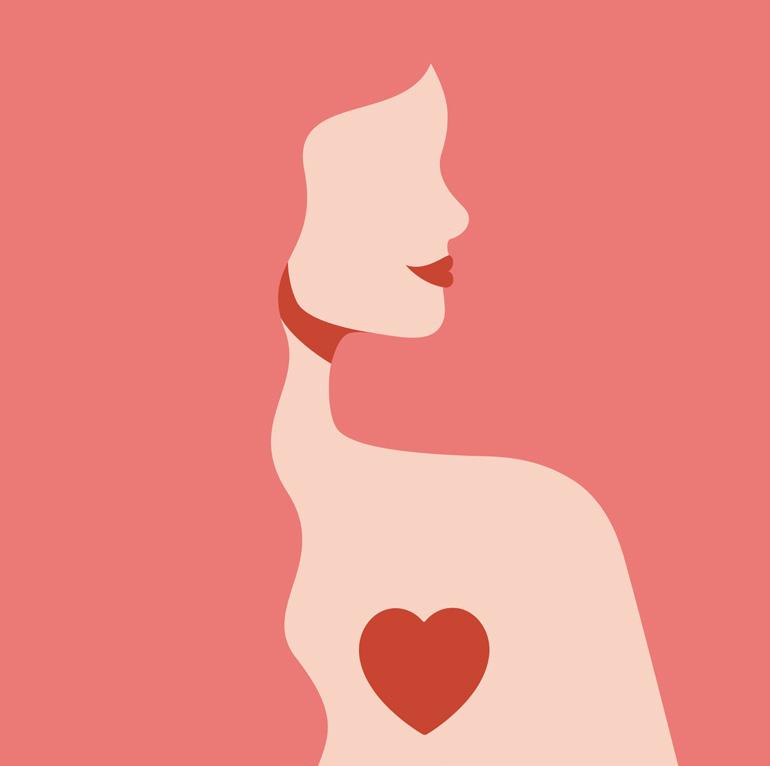
Coronary artery disease, also commonly known as coronary heart disease or atherosclerosis, is the most common type of heart disease. More than 6% of women over the age of 19 are afflicted by it, which can lead to a heart attack or heart failure.
Heart conditions for which women are at higher risk than men include cardiac syndrome X, angina (chest pain), and broken heart syndrome (stress-induced cardiomyopathy). Women can also be affected by several other heart conditions. These include heart failure, heart valve disease, arrhythmia (irregular heartbeat), and atrial fibrillation (Afib).
Prevention
Several risk factors for heart disease cannot be modified. Family history, race, gender, menopause, and age all play a role in heart disease. Still, many risk factors can be changed, according to Cleveland Clinic. To reduce your risk for disease:

• quit smoking
• lower your total cholesterol, LDL, and triglycerides
• increase your HDL (good) cholesterol
• reduce your blood pressure if it is high
• keep diabetes under control
• maintain a healthy body weight
• eat heart-healthy foods
• exercise regularly
• reduce your stress
Also, a drink a day may offer some benefit to your heart by increasing your HDL cholesterol. But medical experts caution against more than one drink per day. Studies have found high alcohol consumption can damage the heart. Although some studies suggest alcohol may be beneficial in moderation, others have shown the opposite. Cleveland Clinic recommends if you don’t already drink alcohol, not to begin.
Heart attack signs
Women can experience all the same symptoms as men. Often, however, women experience heart attacks differently. Most notably, women don’t always ex perience crushing chest pain. Instead, they may feel tightness or pressure in their chest. As a result, symptoms can go unnoticed or are easily brushed off. If the pain or discomfort goes away and then comes back or lasts for more than a few minutes, it could be a symptom.
Other symptoms include:
• shortness of breath
• pain, discomfort, weakness, or heaviness in either arm
• discomfort in the neck, jaw, upper back, shoulders, or stomach
• indigestion, nausea, or vomiting
• cold sweats
• fatigue
• sleep disturbance
• dizziness or lightheadedness
What to do if you’re having a heart attack
Call 911 immediately and have them dispatch emergency medical services (EMS). This is usually faster than having someone drive you to the hospital. Also, if you’re in a public place, such as work or a store, a defibrillator may be available. Ask whoever you see first to check. Defibrillators come with easy instructions and could save your life.
Finally, take an aspirin, says physician Anthony Komaroff, editor-in-chief of Harvard Health Letter. He recommends a standard dose of 325 mg that isn’t coated. “Chew it, and then swallow it with a glass of water,” says Komaroff, to quickly get it into your system. This can slow blood clotting and limit damage to your heart.
January 2023 • IN GOOD HEALTH – Buffalo & WNY’s Healthcare Newspaper • Page 15
HEART HEATH
Face Yoga: Om Away Sagging?
By Deborah Jeanne Sergeant
If you want to look up to three years younger, facial yoga may be the answer. Purported to tone the facial muscles and provide facial rejuvenation, facial yoga involves following a regimen of facial movements and poses to provide results.
Gary Sikorski, founder of the Happy Face Yoga method (happyface.com) in Cleveland, Ohio, has been training adherents in the practice since 2006.
“The Effects of Facial Exercise on the Appearance of Aging,” a small study by Northwestern University Medicine published in JAMA Dermatology in 2018, demonstrated that a 30-minute daily then alternate-day facial exercise program for 20 weeks helped middle-aged women improve their fullness of their upper and lower cheeks.
“I’m the first person to medically prove my techniques work,” Sikorski said. “I teach muscle resistance facial exercise. There are 57 muscles in the face, neck and scalp. As you strength-
en those muscles, that’s what helps bring a more youthful appearance as it lifts the cheeks and strengthens the jawline. Also, it can improve blood circulation to improve the complexion. As those muscles are lifted and toned instead of sagging, it tightens the skin which helps soften those fine lines. It’s all these things that add to aging.”
He eschews gadgets advertised online as he believes these are ineffective because they don’t strengthen the muscles, although they can stimulate blood circulation.
“That helps with brightness, but it won’t tone the face, so they don’t offer lasting results,” Sikorski added. “Some just do stretching, which
Fatal Drug Overdoses Among U.S. Seniors Have Tripled Since 2000
Growing numbers of older Americans are dying from drug overdoses and alcohol abuse.
That’s the tragic takeaway from two new reports by the U.S. Centers for Disease Control and Prevention.
More than 5,000 people aged 65 and older in the United States died of a drug overdose in 2020, and this number has tripled since 2000, according to one of the reports.
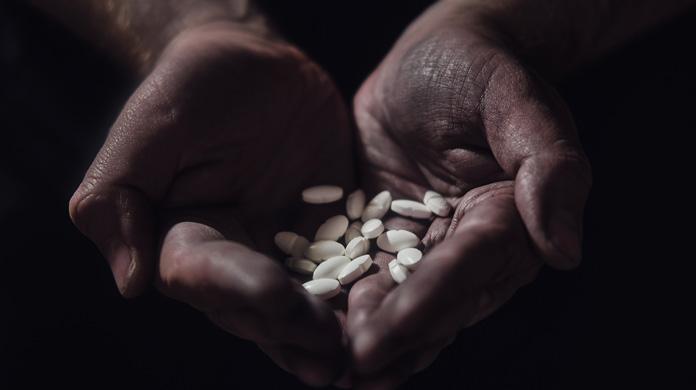
The other report revealed that more than 11,600 U.S. seniors died from alcohol-induced causes in 2020. Alcohol-induced death rates in this age group have been on the rise since 2011 and jumped more than 18% from 2019 to 2020.
The new research wasn’t designed to look at why more older Americans are dying from drug overdoses or alcohol abuse, but the
findings mirror what has been seen in younger age groups.
Abuse of fentanyl and other synthetic opioids has had a big impact on the older population as well as younger folks, said study author Ellen Kramarow. She is a demographer at the CDC’s National Center for Health Statistics, which published the data Nov. 30 in an NCHS Data Brief. Death rates from these drugs increased by 53% from 2019 to 2020 among people aged 65 and older, Kramarow said.
The increase in deaths from drug overdoses and alcohol use has been rising faster in men, she added.
The study also highlighted a racial gap in deaths from drug overdoses among older adults. Drug overdose death rates among 65-year-olds are highest among Black people with one exception: white women aged
won’t add a youthful look to the face.”
His program uses the fingers, hands and, for resistance, the teeth.
One of the criticisms of face yoga is that repeatedly making the same facial expressions will cause wrinkles. However, Sikorski said that in 16 years, no one has complained about wrinkles forming from following his program.

He said that how quickly adherents see results depends upon the condition of their face initially and their age. Factors such as smoking, drinking alcohol, lack of sun protection and poor diet can affect the skin also. Those following the program should perform the exercises daily for six to 10 weeks.
“The more exercises you do, the faster and better the results,” Sikorski said. “Once you achieve the maximum success, then maybe one or two times for 20 minutes per week.”
He likened the effects to people who work out at a gym. Stopping the workouts will mean lower muscle tone.
“As we age, facial muscles weaken and begin to sag,” Sikorski said. “Weakened muscles will cause many aging problems in the face. These problems can be corrected, or for younger people, prevented, by practicing facial exercise.”

These include eyes that appear narrow, sagging cheeks, downturned corners to the mouth, jawline jowls and pouches.
Kristine Koch, NYS licensed esthetician, owns and operates Nickel City Skin Spa in Buffalo, practices facial yoga and recommends it to her clients.
“You’re tightening and toning the muscles through stretches and holding poses, just like traditional yoga,” Koch said. “You use your facial muscles in the same way all the time. Deeper lines are on the face, particularly the lines around the eyes because those muscles are used in the same way all the time. To counter that, you have to use them in a different way.”
She includes face yoga with her cleansing and moisturizing routine to
75 and older have the highest death rates from drug overdose.
The risk of dying from alcohol-induced causes among people aged 65 and older was highest among American Indian and Alaskan Native people, the investigators found.
Experts who reviewed the new study were distressed but not surprised by the statistics.
The findings sadly reflect what Anne Fernandez is seeing in her practice. She is an associate professor in Michigan Medicine’s department of psychiatry, in Ann Arbor.
“I am struck by the increase in fatality from alcohol and drug use among both older adults and among younger adults, as well,” Fernandez said. “The two things that stand out to me are deaths from alcohol-associated liver disease and deaths from a drug overdose.”
What’s behind this?
Many factors play a role in this uptick, she said. “The baby boomer generation is now reaching older adulthood, and baby boomers histor-
save time. In addition, she said that using a jade roller and other tools can help sculpt the face.
“When people ask about Botox, fillers or plastic surgery, my first suggestion is to use seven to 10 minutes a day to incorporate the poses, massages and facial roller,” Koch said. “With the tools and stimulation of the skin, it encourages blood flow to the area, which oxygenates it. You’re encouraging your skin to generate more collagen, which creates elasticity.”
She added that because the effects of facial yoga are cumulative, those who practice it must do so for weeks to see results and continue to do so to maintain the effects.
Most skin damage comes from sun damage, smoking, pollution, consuming too much sugar and alcohol, and skimping on water. Preventing and minimizing the signs of aging rely upon avoiding excess sun exposure, healthful diet and hydration.
A FEW HAPPY FACE YOGA EXERCISES:
• The Cheek Lifter: Open your mouth to form an “O” and fold your upper lip over your teeth. Smile to lift cheek muscles up, then put your fingers on the top part of the cheek before releasing the cheek muscles to lower them. Lift the cheeks back up and repeat by lowering and lifting 10 times.
• Happy Cheeks Sculpting: Smile without showing your teeth. Purse your lips together and then smile — forcing the cheek muscles up. Place your fingers on the corners of the mouth and slide them up to the top of the cheeks, holding for 20 seconds.
• The Eyebrow Lifter: Press three fingertips under each eyebrow to force your eyes open. Smile while trying to push your eyebrows down against your fingers. Close your eyes and roll your eyeballs up to the top of your head, holding for 20 seconds.
ically have higher rates of substance use than the generation before,” Fernandez explained.
It’s also been a perfect storm for drug and alcohol abuse. “Alcohol and drug use also tend to increase when there are economic challenges, when drugs and alcohol are accessible and affordable, and when major stressful events take place, like the COVID-19 pandemic,” she said.
In addition, the drugs people take now are also more lethal than they were even a decade ago. “Early on, the opioid overdose crisis was driven by prescription opioid use but now it is driven by highly lethal synthetic opioids like fentanyl in the drug supply,” Fernandez noted.
Page 16 • IN GOOD HEALTH – Buffalo & WNY’s Healthcare Newspaper • January 2023
Images show a woman after going through a face yoga treatment and before. Provided Gary Sikorski, founder of the Happy Face Yoga.
Gary Sikorski, founder of the Happy Face Yoga in Cleveland.
OMEN'S HEALTH
Eco-friendly Menstrual Products
By Amanda Jowsey
The average menstruating person uses between five and 15,000 pads and tampons in their lifetime, all of which break down into microplastics that end up in landfills and waterways.
These products contain chlorine, dioxin and other harmful chemicals and take hundreds of years to decompose. They produce 200,000 tons of waste per year in the United States alone.
The environmental impact of traditional menstrual products is only one concern. The risks these products pose to women’s health are also being reexamined.
Not only do the toxic chemicals in tampons contribute to the risk of toxic shock syndrome, but the rayon and polyester fibers they’re made from can also scratch the vaginal canal, leading to pain and further increasing the risk of TSS.
New companies have made it their mission to create products that solve this dilemma and benefit the two places we inhabit: our bodies and our planet.
The average menstruating person has about 450 periods in their lifetime and spends an average of $20 on menstrual products every cycle. This is estimated to add up to more than $9,000 a lifetime.
We need more sustainable products for our health, our planet and our budgets. Here are some of the best alternatives and the companies behind them, to traditional tampons and pads.
Period underwear

The Period Company, founded in Los Angeles by stylist Karla Welch and marketing guru Sasha Markova, leads the industry in this wearable period protection. The company sells its product online and through retail stores.
“This specially designed, non toxic period underwear can absorb up to nine tampons worth of period blood and stay dry feeling. It is highly absorbent, washable, reusable, relatively comfortable and reliable,”
according to TPC.
Just one pair can last up to five years. There is nothing complicated about them. They are simply worn like regular underwear through regular daily activities.

TPC is all about community and menstrual equity— the mission, to increase the affordability and availability of menstrual products for individuals with limited access.
TPC partners with several other organizations including the PAD Project, “a women’s health program used to educate women on their monthly menstrual cycles,” and provide “sustainable hygienic kits to promote menstrual health to women who do not have access to menstrual hygiene products.”
TPC also partners with Love Your Menses, a nonprofit organization that promotes menstrual equity and supports girls and women “through education, resource connection, and mentorship.”
The best part about these undies — they save money and frustration dealing with trips to the store and the bathroom. There are different sizes and styles available. Prices range from $12 to $30.
These aren’t readily available in stores yet. You can find them at Target and online through several retailers. With the TPC Community Donation program, you can even buy a pair for someone else and the company will donate it to persons in need. A $20 donation covers the cost to ship four pairs to “a featured organization.”
Menstrual cups and discs
The menstrual cup is inserted and removed like a tampon and is made of medical grade silicon. It’s designed to sit in the vaginal canal to collect flow rather than absorb it. They can be less messy than the disc option and come in more shapes and sizes.

Menstrual cups can last several years and can be recycled when it’s time for a replacement, so less product ends up in landfills.
DivaCup has been leading the way in sales and through Diva’s new Impact Program, they are now joining other companies to promote menstrual equity and improve the lives of women in communities nationwide.
Menstrual discs have many similar features of cups, but the biggest selling point is that it offers mess-free period sex. You should not have sex with a menstrual cup in. Because discs sit at the base of your cervix, not in the vaginal canal, you and your partner shouldn’t be able to feel it if it’s been inserted properly. It still does its job and makes life a lot less complicated.
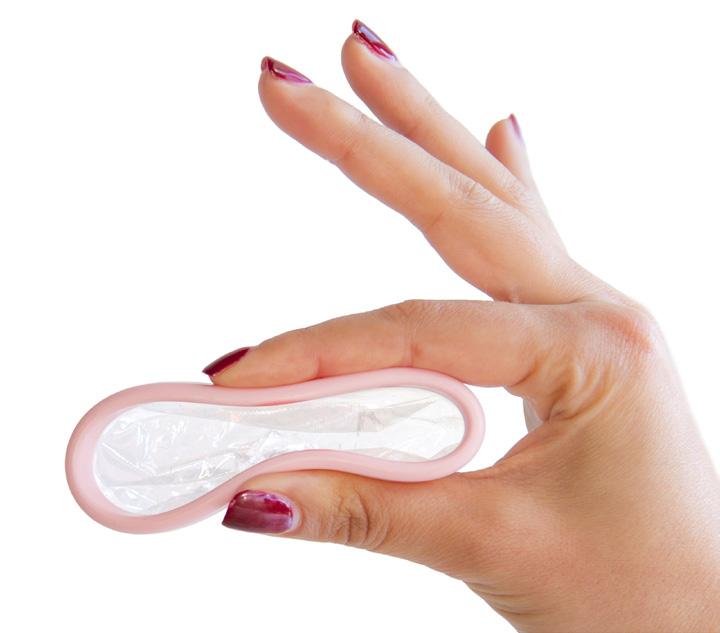
Menstrual discs are better for your body, but they are not the most eco-friendly option. They can be changed less often than pads and tampons, offering 12-hour wear, but still take up landfills the same way as they are single use.
Their price ranges from $20 to $40 and they can be found at most drug stores and large chain stores.
Reusable pads and “organic” tampons
Reusable pads are softer, more effective, washable and more comfortable. TPC, The Eco Woman, and Gladrags are the leading companies who offer this option. One pad costs around $15. Most packs come with two or three pads. They reduce waste on the planet and on your wallet.

Some companies are now offering chlorine-free, “organic,” biode-
gradable menstrual hygiene options that use little to no plastic. These are better on your body as they contain less chemicals. They still create waste and pollution, but they take less time to decompose and break down into natural components. They are not the most financially friendly, costing more than a regular box of tampons. But, they are more eco-friendly.
Please note
Period poverty and menstrual equity are terms you’ll be hearing more, as activists work toward ending the “pink tax” on women’s products through new legislation — the trend that prices on products and services marketed toward women are more expensive than those marketed toward men.
Two in five women struggles to purchase period products due to a lack of income. One in three low-income women miss work, school and other outings on their period because of a lack of period supplies.
With reusable products, not only do we help the planet, but we can help close some of the economic gap for those struggling to afford these necessary items.
You can support the availability and affordability of menstrual products for individuals with limited access and for other purposes by writing to your local Congress in support of the Menstrual Equity for All Act of 2021.
If you or someone you know need period products
• Call 211 or visit 211.org using keywords “feminine hygiene products” or “period supplies.”
• Erie County Alliance for Period Supplies through the Every Bottom Covered organization www.eriecountyallianceforperiodsupplies.org
• Erie County Alliance for Period Supplies eriecountyafps@gmail.com 877 E Delavan Ave Buffalo, NY 14215
•The Alliance for Period Supplies: info@allianceforperiodsupplies.org • 203-821-7348
• Planned Parenthood: plannedparenthood.org 1-800-230-7526
January 2023 • IN GOOD HEALTH – Buffalo & WNY’s Healthcare Newspaper • Page 17
Best Ways for Busy Women to Lose Weight
By Deborah Jeanne Sergeant
Dividing their time among work, childcare and household management leaves little time for many women to take care of their own health, including maintaining a healthy weight.
According to a 2019 Gallup poll, women are more likely than their men to take care of parental duties and housekeeping including laundry, cleaning, cooking, grocery shopping and dishwashing.
Women are also more often the primary caregiver of other family members such as one who is disabled or a senior parent, and usually manage the family’s social schedule and health appointments.
Homemakers account for some of that division of labor. In 2019, the Bureau of Labor Statistics reported that 57% of women aged 25-64 were employed, compared with 74.4% of men. But especially for women who work full time, managing their weight often becomes a low priority.
In addition to having many things vying for their time, women’s experiences such as childbirth and conditions such as polycystic ovary syndrome can also contribute to weight gain. Between 5% and 10% of women have PCOS. Women also receive a barrage of mixed—and often incorrect—messages about weight gain, as they try to live up to the cultural ideal of a svelte figure.
“I think it is important for women to talk with the primary care provider to discuss any health goals or changes before making them,” said Justine Hays, registered dietitian and senior Snap-Ed nutritionist with Cornell Cooperative Extension Niagara County in Lockport.
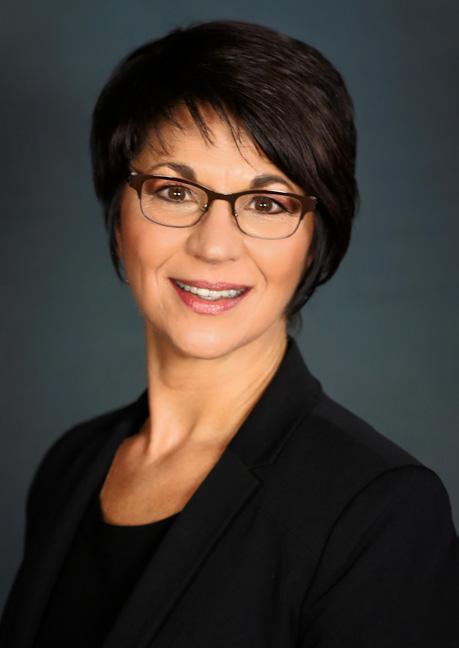

Of course, the diet plays a big
role in weight loss. Yo-yo dieting has been shown to contribute to weight gain. Hays recommends a diet rich in nutrient-dense, low-calorie fruits and vegetables.
“Women may also need to increase protein, paired with fiber, to help stay feeling fuller longer,” Hays said. “Lean protein, such as chicken and fish are good options. As people increase physical activity, it is normal to feel hungrier. Choosing higher protein foods, paired with vegetables and fruit or whole grains for fiber, can help a person feel more satisfied and fuel their body for all they wish to accomplish.”
Eating “diet” entrees or foods is not as healthful as eating simple, whole foods. Consistently eating a reduced calorie diet of balanced foods can yield significant results. Unhealthful sources of fat are solid at room temperature, such as butter, margarine, shortening and lard. Plant-based sources of fat in moderation is more healthful, including canola oil and olive oil.
Many women diet in the extreme, “eating too little to stimulate energy—fat—expenditure and weight loss,” said Mary Jo Parker, registered dietitian and nutritionist in private practice in Williamsville. This can lead to overeating later.
Parker also noted that hormones, emotions and other underlying factors all affect the results of weight loss attempts. No one weight loss plan works for everyone.
“It’s more complicated than one might expect, especially if a person is trying to get healthier at the same time, which is what my practice is all about,” Parker said.
Instead of only calorie cutting, eating sufficient nutrition along with cutting calories can help with weight
loss as it ensures the body’s needs are met.
Kara Massotti, dietitian with Buffalo VA Medical Center, noted that cutting processed and high-sugar foods is vital.
“People feel there’s a magic trick and there’s not,” she said.
Many times, when craving salty or sweet snacks, it is thirst, not hunger. Massotti advises patients to try drinking water instead of eating between meals. Hydration is also important for maintaining good health. Massotti advises drinking water instead of sports drinks or other sweetened beverages.
In general, weight loss comes down to creating a calorie deficit through eating less and moving more. Massotti noted that physical activity also improves stress level and sleep quality.
“Improving those two can help us achieve and manage a healthy weight,” she said. “All those work hand in hand in what we call a whole health approach: sleep, stress, nutrition and exercise. They’re all connected, along with spirituality and mental health. It’s a whole cycle. Each thing loops the next one together to be your best and healthiest self.”
She encourages women to take their children walking, go for walks at lunchtime or after dinner and play outside with the kids.
“Any little bit is better than nothing at all,” Massotti said.
Fitting in workouts can be tough for moms. Kerri Howell, online personal trainer, nutrition coach and owner of Rochester-based fitprmomlife.com, likes to keep weight control simple and, for those time-strapped, efficient.

“You only need 15 minutes a day of resistance training to make a difference,” Howell said. “Sometimes that works better than trying to fit in three one-hour training sessions, especially for busy working parents. That, coupled with walking as much as possible will achieve the fitness activity needed to lose weight.”
Resistance training can include performing bodyweight exercises like squats, calf raises, planks and pushups. Fitness bands, free weights and kettle bells can also help for home resistance training workouts.
To save time on home workouts, Austyn Affronti, president of Affronti Fitness in Rochester, recommends high intensity interval training. It may seem like a series of short workouts would not help as much as one long workout of 45 to 60 minutes. However, Affronti said that for some people, breaking up the exercise sessions is not only more convenient, but it can also help them workout at their highest level throughout each minute instead of putting forth less exertion as they begin to feel fatigued.
“With shorter workouts, you’re putting in maximum effort,” he said.
L TO R: Justine Hays, registered dietitian and senior SnapEd nutritionist with Cornell Cooperative Extension Niagara County in Lockport; Mary Jo Parker, registered dietitian and nutritionist in private practice in Williamsville.
Page 18 • IN GOOD HEALTH – Buffalo & WNY’s Healthcare Newspaper • January 2023
OMEN'S HEALTH
How Women Can De-stress
By Deborah Jeanne Sergeant
Females ranked higher than males regarding times they feel stressed, according to a recent Gallup World Poll.

The results aren’t surprising considering the numerous effects of the pandemic that unduly burden women such as changes in their children’s education, supply chain problems, health concerns, all areas in which women typically perform more work than men.
Too much stress is not good for anyone.
In addition to the negative emotional aspects of too much stress, it also contributes to numerous disease processes.
Getting rid of stress would not be
possible—or desirable, as even positive circumstances produce a certain amount of stress, such as going on vacation, receiving a promotion or adding a new baby to the family. But whether positive or negative sourced stress, mitigating its effects is important.
“All people are unique. They carry with them different responsibilities, life challenges, and emotions,” said Marcy Abramsky, licensed clinical social worker with Inspire a Mind in Williamsville. “This uniqueness even presents itself between women and men. This is not solely based on the differences in the human body. They are so unique to one another in that, their roles are representative of specific characteristics throughout
Yeast Infections: Most Women Will Experience It
By Deborah Jeanne Sergeant
Three out of four women will experience a yeast infection at some point in her life, according to date from the Mayo Clinic. During summertime, yeast infections are more common since yeast favors warm, moist environments which are typical during hotter months.
Usually indicated by burning, itching and discharge, yeast infections (candidiasis) may go away on their own if mild. However, moderate to severe infections will require over-the-counter medication or prescription medication.
According to the website of Chouchani, Sayegh & Bagnarello, MD LLP in Williamsville, “Women who suffer from diabetes or HIV infection may also be at an increased risk of developing yeast infections. Other causes of yeast infections may include poor eating habits, including an over-consumption of sugary foods, stress or lack of sleep.”
Environmental factors also matter. To prevent yeast infections, keep the vaginal area dry. Change out of wet swimsuits and workout clothing
promptly.
“Wear underwear that ‘breathes,’ like cotton fabrics,” said Anne Marie Davis, an OB-GYN with Neighborhood Health Center in Buffalo.
Synthetic fabrics can cause more sweat and trap moisture against the skin.
Chemicals can also irritate the vagina. Davis advises avoiding any soap or laundry detergent that has a color or scent.
Some women experience yeast infections after their period from using tampons or pads. Some have yeast infections after using some types of personal lubricants. Switching brands may help or trying menstrual cups instead of pads or tampons.
Davis added that wearing tight pants or thong style underpants have not been associated with yeast increasing risk of yeast infections.
“Overall, it’s about maintaining good health,” Davis. “Eat well and exercise. For those with diabetes, getting their sugars under control helps.”
history. Although, societal norms are absolutely shifting, the myriad roles that many women still own can go beyond that of what anyone can imagine.”
She said that deciding to destress represents the first and most important step. Scheduling time to do something enjoyable such as exercise, catching up with a friend, a pedicure or a nap, may involve cutting out something else. Talking with a therapist may also count as “me time.”
“If it’s a family commitment, it may still have to go,” Abramsky said. “Try to find something to remove that won’t cause you more stress but realize this ‘me time’ is your lifeline.”
“Me time” represents just one coping skill. Abramsky also said that adopting a healthy lifestyle and setting reasonable limits and is also vital to prevent generating too much stress. Saying “no” to some commitments involves knowing what is truly essential.
“Asking yourself what you want to achieve can help you decide which things to put your time and energy into, and which things can wait or be dropped from your to-do list,” said Jennifer Cain, Ph.D., licensed psychologist practicing in Buffalo. “Identify what your goal is, or what your most important goal is. Women are often pulled in many different directions.”
She advises taking a break to perform a grounding exercise, which involves placing the feet flat on the floor and taking slow, deep breaths. This “can help restore a sense of balance and calm when your tension level is creeping up higher than you would like. You can add a variation, like moving your feet as if you are walking through sand while seated in your chair, or imagining you are in a place that makes you feel very calm and relaxed.”
It can be easy to get swept into
drama while comparing lives with other people on social media, such as possessions, experiences and relationships. Instead, focusing on gratitude and close relationships evokes a stress-less contentment.
“Being close to people you trust and who treat you well releases brain chemicals that enhance your health and wellbeing, emotionally and physically,” Cain said. “Prioritize meaningful interactions with the people you care about and who care about you.”
Delegating responsibilities to others can help lighten the load. Although today’s men have improved in their willingness to help compared with previous generations who generally held to more convention divisions of labor, “society has an expectation that women plan everything,” said Elizabeth Woike-Ganga, licensed clinical social worker and president and CEO of BestSelf Behavioral Health, Inc. in Buffalo. “Ask for help from teenaged kids or your spouse when you need it.”
For some women, it is a matter of letting go of their own ideals and perfectionism for the outcome.
Delegating can also involve outside services, such as signing up for regular grocery and household goods delivery, food kit delivery, buying baked goods from a local bakery or hiring a cleaning service to help out sometimes.
“I take that hour or more I would’ve spent and do my yoga, have a cup of coffee and read a book to take time for myself,” Woike-Ganga said.
She also counts self-care as including healthful eating and sufficient sleep. Poor eating habits contribute to the ill effects of stress by placing additional physical stress on the body, just as lack of sleep “is directly correlated with managing stress. Have enough time to get those six to seven hours of sleep.”

Some of her patients say that eating foods rich in probiotics such as yogurt helps them maintain healthy balance in their system and reduce the number of yeast infections they have. The vagina naturally has beneficial bacteria, lactobacillus, that keeps yeast in the vagina within healthful limits. Taking an antibiotic for an illness can wipe out these “good bacteria” and trigger a yeast infection and increasing intake of probiotics may help.
It may seem like douching or using yoni pearls will clear out an infection. However, these can make infections worse or increase the risk of vaginal problems for those who do not have a yeast infection.
“Douching is always discouraged,” Davis added. “The vagina is a self-cleaning unit. If you leave it alone, that will help. There’s no need
to douche—ever. Use normal soap and water on the outside; it’s all you need.”
She recommends over-the-counter Monistat for treating mild to moderate yeast infections. Women should carefully follow package directions and precautions.
“The other thing to help with vaginitis if they’re irritated is taking a bath with some baking soda to calm down generalized infections,” Davis said.
Women should see a healthcare provider if they are unsure if they have a yeast infection, it is not getting any better after trying an over-the-counter medication, or if other symptoms develop. Women with severe symptoms, multiple yeast infections a year, pregnancy, uncontrolled diabetes or compromised immune system should see their healthcare provider right away.
January 2023 • IN GOOD HEALTH – Buffalo & WNY’s Healthcare Newspaper • Page 19
OMEN'S HEALTH
New Alzheimer’s Drug Slows Progression of Disease
By Deborah Jeanne Sergeant
Currently, more than six million people in the US live with Alzheimer’s disease and 410,000 of those live in New York. By 2050, those figures are anticipated to double, according to the Alzheimer’s Association.
Eisai and Biogen’s lecanemab, in phase 3 of its clinical trial, has been shown to slow the rate of cognitive decline caused by Alzheimer’s by 27%. The anti-amyloid monoclonal antibody drug is meant for people with mild cognitive impairment.
“This is very encouraging news for families with Alzheimer’s,” said Elizabeth Smith-Boivin, executive director of the Alzheimer’s Association Northeastern New York. “It means enhanced quality of life, memories and abilities for those affected by Alzheimer’s. The preliminary data says there’s a slowing down of cognitive decline compared with placebo, which means the earlier you begin, the better you’ll be and the longer you’ll be without cognitive decline.”

Time is not on the side of people with Alzheimer’s and their families. With lecanemab slowing the disease’s progression, they will have more time. Current medication for Alzheimer’s disease only treats symptoms. lecanemab works by combating the excessive accumulation of amyloid proteins in the brain, which is believed to be the cause of Alzheimer’s.
“When amyloid over accumulates, it lodges on nerve cells which results in nerve cell decay and death,” Smith-Boivin said.
Although not a cure, lecanemab shows promise for at least slowing the disease’s progression.
Alzheimer’s affects each race. However, Blacks have double the risk and Hispanics are at 1.5 times the risk Hispanics compared with whites. Twenty-five of the participants in the lecanemab research were Black and Hispanic.
More detailed results yet forthcoming will give a better indicator as to how much time patients will have near their baseline cognition while using lecanemab. It is also not yet clear as to the side effects.
Contraindications are not yet available. They are especially im-
portant for older adults who may be taking other medications for unrelated health conditions.
The full results on lecanemab should be available in a few months.
After FDA approval, health insurance coverage for the new drug depends upon whether Medicare and Medicaid Services provide coverage. Most health insurance companies follow their lead. Smith-Boivin said that the only other anti-amyloid treatment, Aduhelm (generic name aducanumab), would have cost $30,000 per month out-of-pocket. In a similar class as lecanemab, Aduhelm was also an infusion drug, but was not approved by the FDA.
Sally Stier, president of Clarity Group in Depew, Blasdell, Amherst and Batavia, advises clients on Medicare options. She said that if Medicare prescription drug plans will cover lecanemab, the introduction of the medication will not count as a qualifying event, event for those who would benefit for promptly beginning a regimen.
“There are other qualifying events that can help people get into a plan,” Stier said. “If they have EPIC or any other kind of assistance like Social Security’s Extra Help program. There are circumstances where they can make changes, but changes in prescriptions is not one of those.”
She hopes that financial assistance programs will be available to help people. Even covering 95% of the cost would put a $30,000 medication out of reach for many seniors at $1,500 per month.
“The full price pales in comparison for the cost of long-term care for individuals with this disease,” Smith-Boivin said. “If we can treat people effectively with this and other medications, we could mitigate the rising cost of nursing homes and other long-term care options for these individuals. Plus, there’s quality of life. If you ask anyone if they want to go to a nursing home, 90% will say they want to stay in their home.”
Support and information from the Alzheimer’s Association are available for free anytime, day or night, for individuals with Alzheimer’s disease and their caregivers at 800-272-3900.

The Social Security Office
From the Social Security District Office
This New Year, Learn About
Social
Security Online
Social Security programs touch the lives of more than 70 million people. We work hard to ensure critical benefits and other services are accessible to you. Consider the start of the new year as an opportunity for you to engage with Social Security online. This begins with creating your free and secure personal my Social Security account at www.ssa. gov/myaccount. Once you create an account, you can:
• Apply for retirement, spouses, or disability benefits.
• Apply for Medicare.
• Check your application status.
• Request a replacement Social Security number card.
If you do not receive Social Security benefits, you can use your personal my Social Security account to:
• Get personalized retirement benefit estimates.
• Get your Social Security statement.
• Get estimates for spouse’s benefits.
Q&A
• Get instant proof that you do not receive benefits.
If you receive benefits, you can use your personal my Social Security account to:
• Change your address (Social Security benefits only).
• Set up or change your direct deposit information (Social Security benefits only).
• Instantly get proof of benefits.
• Print your SSA-1099.
Your personal my Social Security account has a secure message center. You can choose to receive the annual cost-of-living adjustments and the income-related monthly adjustment amount online. Unless you opt-out of receiving notices by mail that are available online, you will receive both mailed and online notices.
Your personal my Social Security account offers easy access to features that save you time when you do business with us online. Check out our other resources available at www.ssa.gov/onlineservices for your convenience.
Q.: What are some of the documents Social Security will accept as proof of identity for a child?
A.: While you can use a birth certificate to prove age or citizenship, you cannot use it as proof of identity. Social Security needs evidence of the child’s existence after birth. An acceptable document must show your child’s name, identifying information, and, preferably, a recent photograph. Your child must be present unless the picture ID also shows your child’s biographical information (i.e., age, date of birth, and parents’ names). We generally can accept a non-photo identity document if it has enough information to identify the child (such as the child’s name and age, date of birth, and parents’ names). We prefer to see the child’s U.S. passport. If that document is not available, we may accept the child’s:
• Adoption decree.
• Doctor, clinic, or hospital record.
• Religious record (e.g., baptismal record).
• Daycare center or school record.
• School identification card.
All documents must be either originals or copies certified by the issuing agency. We cannot accept photocopies or notarized copies of documents. To find out more, visit www.ssa.gov/ssnumber/ssnumber. There, you can also find out what
documents you need, fill out and print an application, and then bring or mail the needed information to Social Security. You may also want to read the publication, Social Security Numbers For Children, available at www.ssa.gov/pubs.
Q.: I served in the military, and I’ll receive a military pension when I retire. Will that affect my Social Security benefits?
A.: You can get both Social Security retirement benefits and military retirement at the same time. Generally, we don’t reduce your Social Security benefits because of your military benefits. When you’re ready to apply for Social Security retirement benefits, go to www.ssa.gov/applyonline. This is the fastest and easiest way to apply. For your convenience, you can always save your progress during your application and complete it later. We thank you for your military service!
Q.: I’ve decided I want to retire. Now what do I do?
A.: The fastest and easiest way to apply for retirement benefits is to go to www.ssa.gov/retireonline. Use our online application to apply for Social Security retirement or spouses benefits. To do so, you must:
• Be at least 61 years and 9 months old.
• Want to start your benefits in the next four months.
• Live in the United States or one of its commonwealths or territories.
Page 20 • IN GOOD HEALTH – Buffalo & WNY’s Healthcare Newspaper • January 2023
Ask
By Jim Miller
How to Reduce
Medical Bills
Dear Savvy Senior,
What tips do you recommend to Medicare beneficiaries dealing with hefty medical bills? My husband recently had open heart surgery and is recovering slowly, but the medical bills are coming in fast and furious and they’re putting us in medical debt.

— Struggling in Springfield
Dear Struggling,
I’m sorry to hear about your billing struggles, but medical debt has unfortunately become a chronic problem in this country. According to U.S. Census data 19% of Americans households carry medical debt, including 10% of households headed by someone 65 or older. Even seniors on Medicare can easily get snagged in a web of complicated billing and coverage problems.
To help you slash your medical bills, here are some tips recommended by health care experts that you should try.
• Double check your bills: Almost half of all medical bills contain at least one error, including duplicate charges or charges for services you never received. If you’re facing a high bill and are on the hook for some portion of it, request itemized invoices from the hospital and other providers that detail everything you were charged for and go through them line by line. If you find something you don’t understand or find fishy contact the provider for an explanation or a correction.
• Wait for your EOB: Doctors’ offices and hospitals may mail initial bills to you before they even submit them to your health insurer. So, hold off on any payment until you receive an explanation of benefits (EOB) from your provider — Medicare, supplemental Medicare, Medicare Advantage or private insurer. This will show what you owe after your insurance has paid its portion.
If your EOB shows that your insurer is refusing to pay for services that you think should be covered, call them to see whether it’s a correctable mistake, such as a coding error for a certain test or treatment. If it’s truly a denial of coverage, you may need to file an appeal. For details on how to file a Medicare appeal, see Medicare. gov/claims-appeals/how-do-i-filean-appeal.
• Ask for a discount: Call the hospital’s accounting office or the billing staff at your doctor’s practice and ask if they can reduce your bill. You’d be surprised how often this works. Or if

you have the funds to pay the entire bill, ask the hospital or provider for a “prompt pay” discount which may save you 15% or more.
If it’s best for you to pay your bills over time, ask the billing office to set up a no-interest payment plan for you. It’s in the provider’s interest to work with you to obtain payment.
You can also call the hospital where your husband had his surgery and ask a billing specialist if the facility offers financial assistance. According to the American Hospital Association, about half of U.S. hospitals are nonprofit. This means they are required to offer free or discounted services in some instances. This is usually reserved for low to moderate income patients who have limited or no health insurance, but requirements vary from hospital to hospital.

• Get help: If you’ve gotten nowhere on your own, contact the Patient Advocate Foundation (patientadvocate.org, 800-532-5274) who can help you understand and negotiate your medical bills, free of charge. Or consider hiring a medical billing professional to negotiate for you but be aware that these services can cost upward of $100 an hour. You can find potential candidates through the Alliance of Professional Health Advocates (advoconnection.com). Be sure to choose someone who is credentialed by the Patient Advocate Certification Board.



Send your senior questions to: Savvy Senior, P.O. Box 5443, Norman, OK 73070, or visit SavvySenior. org. Jim Miller is a contributor to the NBC Today show and author of “The Savvy Senior” book.
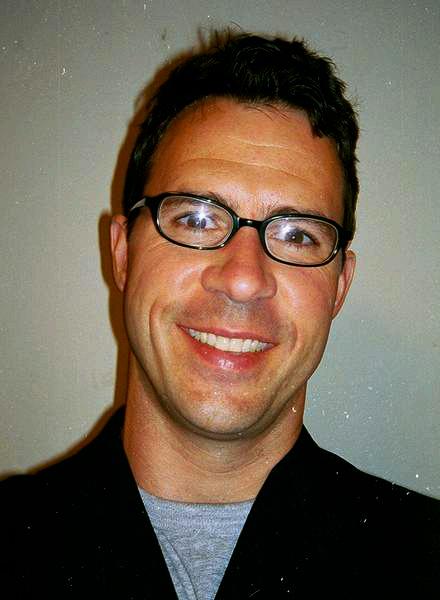
January 2023 • IN GOOD HEALTH – Buffalo & WNY’s Healthcare Newspaper • Page 21
Age in Place While keeping your independent and active lifestyle. Evergreen Place Senior Living Community We‘re Local. We’re Passionate. We Care. Call for a tour of our beautiful newly renovated community. Small pets welcome! 585-637-3140 www.pegasusseniorliving.com/evergreen-place/ 90 West Avenue, Brockport, NY 14420 See How Our Passionate Services Change Families Lives
Your
Senior Living Community EmbraceSeasons Past... Begin Life Anew! For More information Call 716-632-3000 410 Mill St. - Williamsville,NY 14221 www.park-creek.com Stimulating Social, Educational and recreational activities Medication management Access to 24-hour personal care assistance Affordable memory care AskaboutourJanuaryMove-inSpecial!
By Deborah Jeanne Sergeant
The high-intensity interval training style workouts have surged in popularity since the pandemic began.
These home workouts require little equipment and time while eliciting a lot of movement.
As a variation of HIIT, Tabata workouts provide a good calorie burn in mere minutes.
Named for Japanese professor Izumi Tabata, the workouts consist of moving at a high intensity for 20 seconds and then resting for 10. This is repeated eight times, so that one round of Tabata training takes just four minutes, plus a warm-up time beforehand.
Each session includes eight different movements, which can provide plenty of variety.
The Tabata timer shows when it is time to alternate between movements. The movements may include calisthenics such as jumping jacks, burpees, jump squats, mountain climbers, high knee running, lunges, side “skater” lunges and push-ups.
Each movement is performed as intensely as possible.
“Tabata is short and intense and will bring your heart rate up,” said Noah Basehart, certified personal trainer and general manager at Nex-
Gen Fitness and Recovery in Buffalo. “You can get the same benefit in shorter duration with higher intensity than a lower intensity with longer term.”
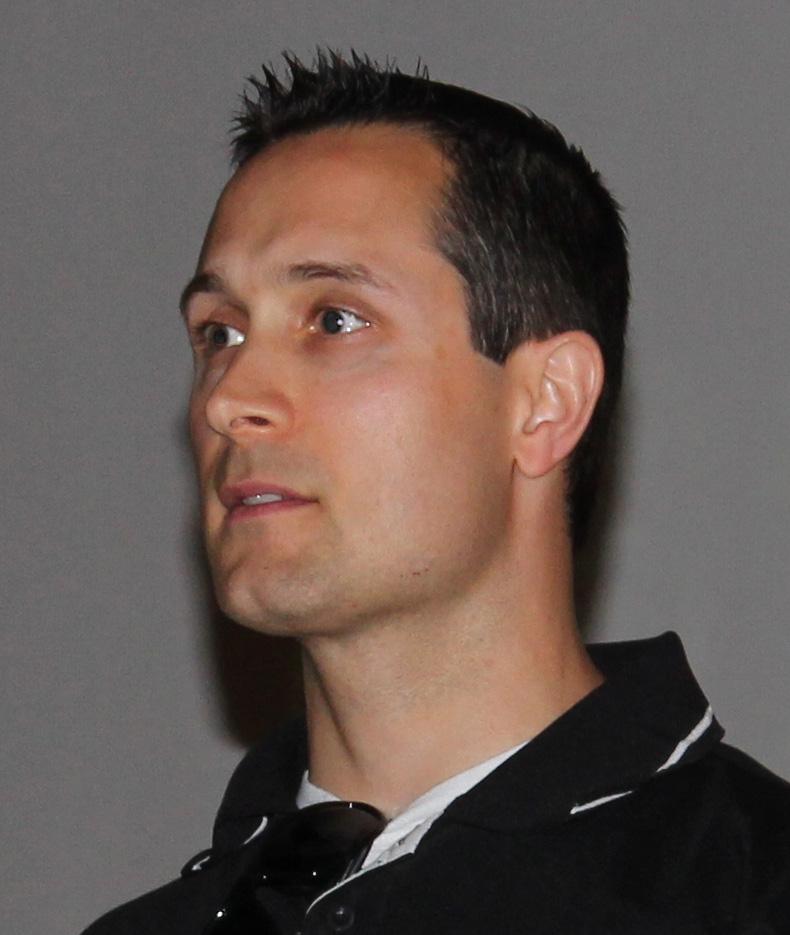

Two rounds (16 minutes) of Tabata training burn 240-288 calories, about twice the amount from running. As Basehart alluded, the movements continue to burn after the movements stop because the metabolism receives a boost.
Tabata and other HIIT require only body weight exercise, although other fitness gear may be helpful, such as dumbbells, kettle bells and a medicine ball. Basehart also said that equipment can help modify most tabata movements such as a TRX band to make performing squats easier by supporting the movement.

He does recommend working with a personal trainer to learn the proper movements for these calisthenics to receive the maximum benefit with the lowest risk of injury.
Compared with general HIIT training, Tabata workouts remove the clock watching as the timer automatically notes when to do what. The timer can also save the intervals set on it to avoid reentering it every session. By not feeling distracted by the clock, it is easier to focus on the movements. By limiting the time for rest, “I get a much better workout,” said Sean Felton professional MMA fighter and trainer
Martial Arts & Fitness in Buffalo.
When training for competition, he wants to help his body resist the need for rest as fatigued muscles means an advantage for his opponent. Felton also likes that “you get a full-body workout. If you have limited time, they can help you.”
He advises clients to work out to their own level of intensity, not someone else’s. Scaling the intensity to a reasonable level while still challenging oneself is key.
Because of its intensity, Tabata workouts are not for everyone.
Joe Fox, personal trainer, certified functional strength training coach and owner of Train Smart in Buffalo, uses high intensity workouts in his program. However, many of his clients are in their mid- to late-50s with pre-existing conditions. Their fitness goals include greater flexibility, mobility and pain-free movement. After working with clients for a while, he may try greater intensity, especially with clients focused on fat loss.
“The overriding concept is the more intensity, the higher risk of injury,” Fox noted. “That’s not necessarily bad if people are prepared for it. Once they have developed a foundation for fitness, and they have core stability, endurance and glute activation, optimal mobility and good, clean movement patterns, we can move to increase intensity.”
Page 22 • IN GOOD HEALTH – Buffalo & WNY’s Healthcare Newspaper • January 2023
L to R: Sean Felton professional MMA fighter and trainer at WNY Mixed Martial Arts & Fitness in Buffalo. “I get a much better workout,” he says about Tabata training; Noah Basehart, certified personal trainer and general manager at NexGen Fitness and Recovery in Buffalo. “Tabata is short and intense and will bring your heart rate up,” he says.
at WNY Mixed
Joe Fox, personal trainer, certified functional strength training coach and owner of Train Smart in Buffalo.
TABATA TRAINING: Short Workout, Big Results










 – Renier Brentjens, MD, PhD Deputy Director
– Renier Brentjens, MD, PhD Deputy Director
























 By Deborah Jeanne Sergeant
By Deborah Jeanne Sergeant





































































